This post is also available in:  Deutsch (German)
Deutsch (German)
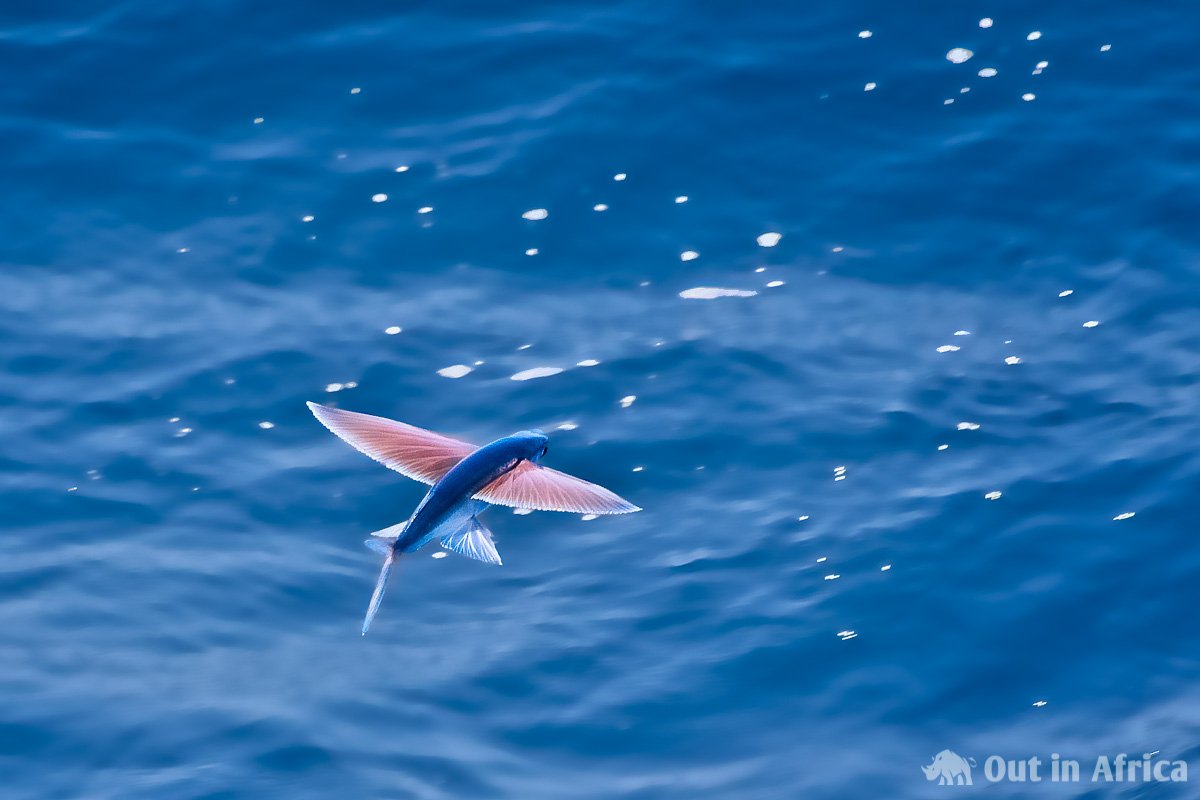
Introduction
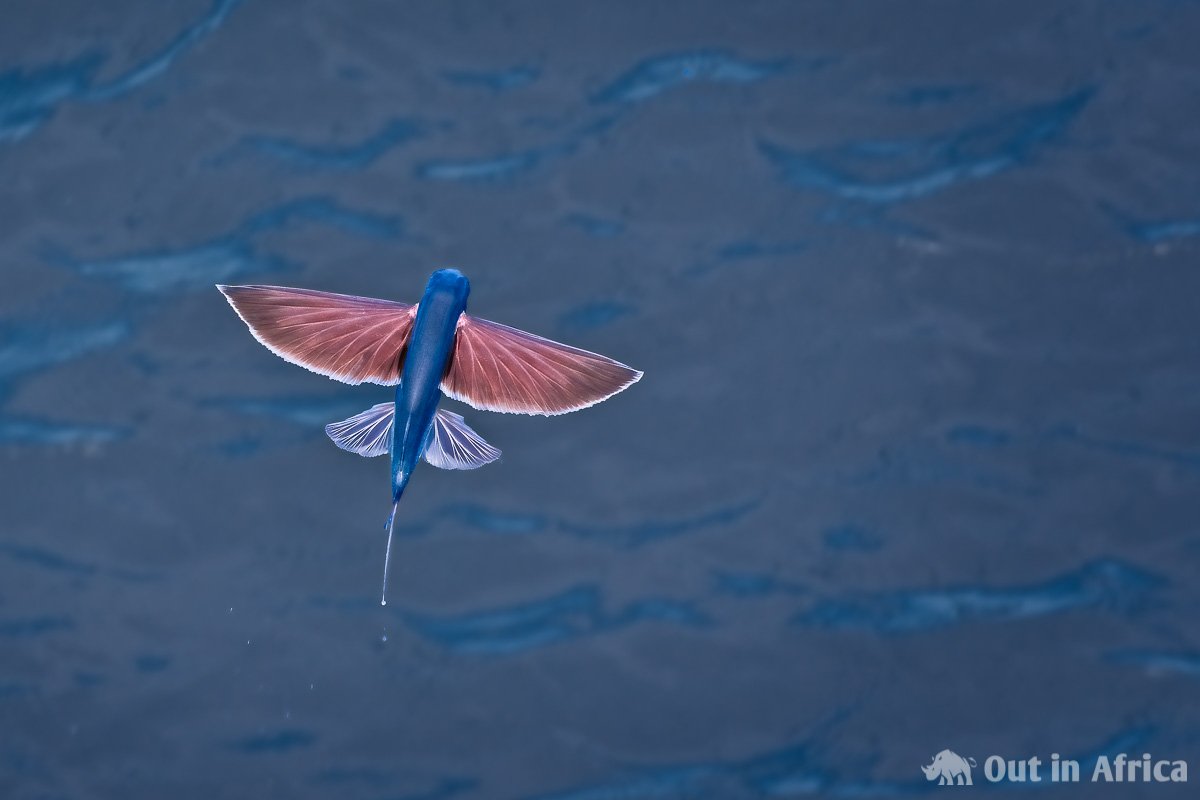
I want to interrupt here the chronology of my journey briefly and describe the flying fish.
Flying fish are also – rightly – called butterflies of the sea. I have seen many thousands of them and taken several thousand photos. They accompanied us from Dakar to Namibia and fascinated me every day.
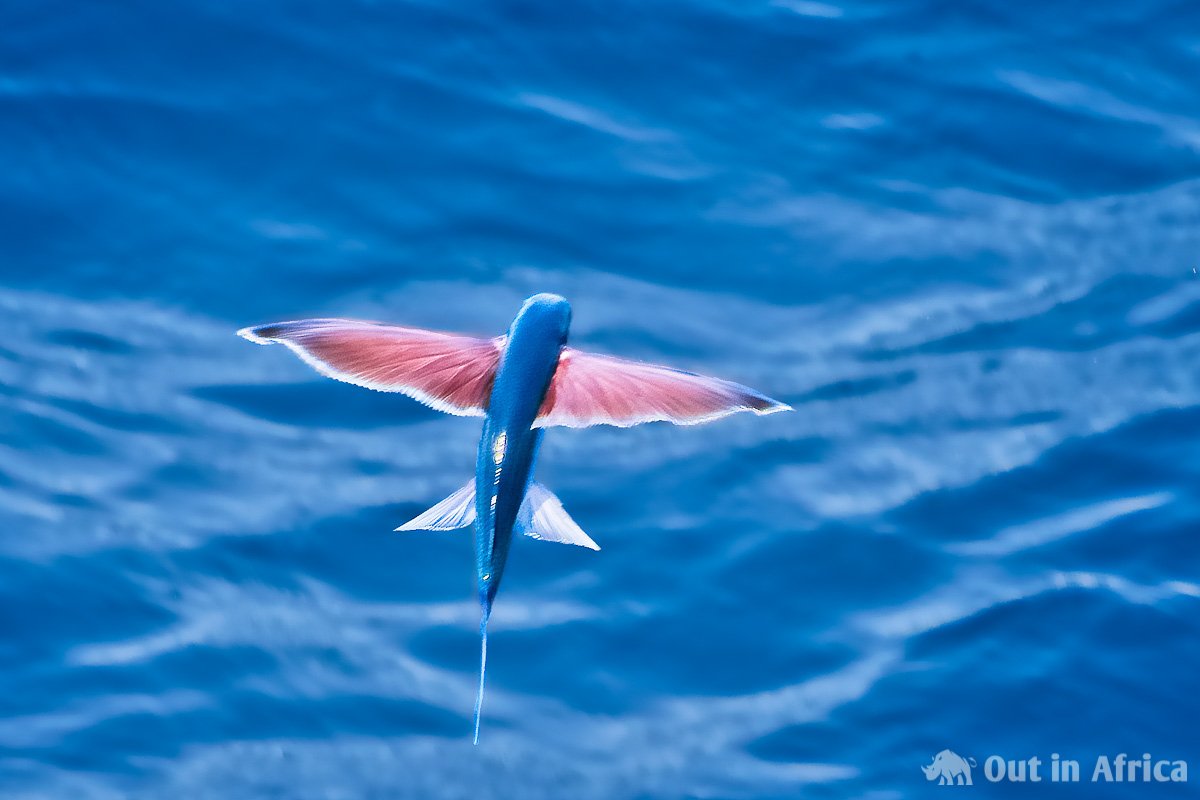
When I stood on the bow of the Bright Sky to observe flying fish, it often had to be very fast-moving. The fish floated out of the water and glided away, the ship not only moved forward but also up and down and my full concentration lay in the photography: getting the fish into the picture, focusing and pressing the trigger.
Most photos were unusable. Either the autofocus didn’t work fast enough, or I didn’t move quick enough, or the fish dropped back into the water. In this way, I made images like this one:
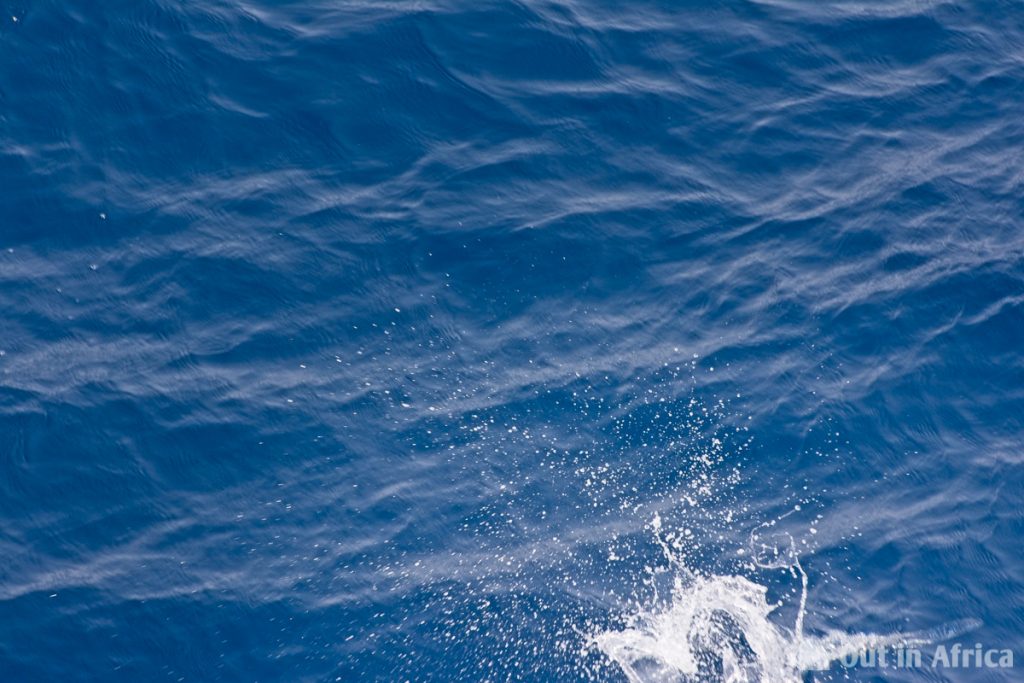
Less than 10 per cent of the photos are usable. Through practice, I improved my quota, but when I first looked at the pictures, I often pressed the “Delete” button.
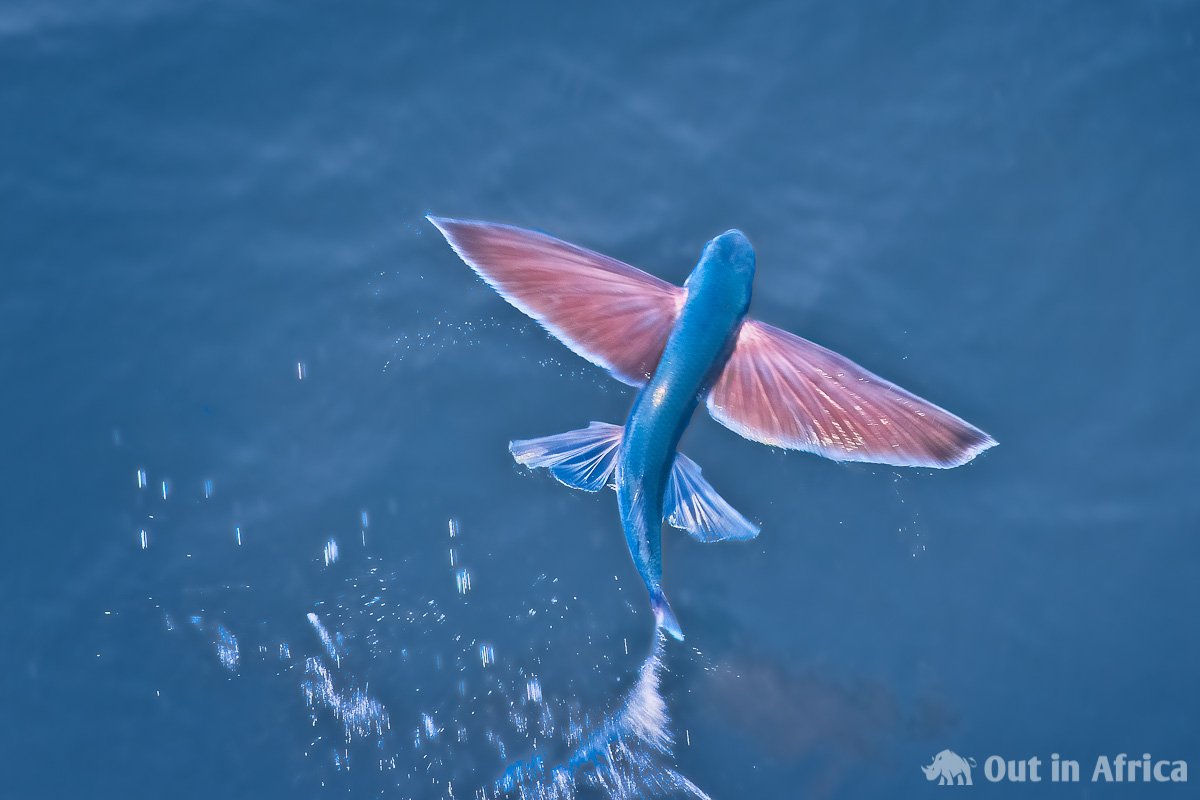
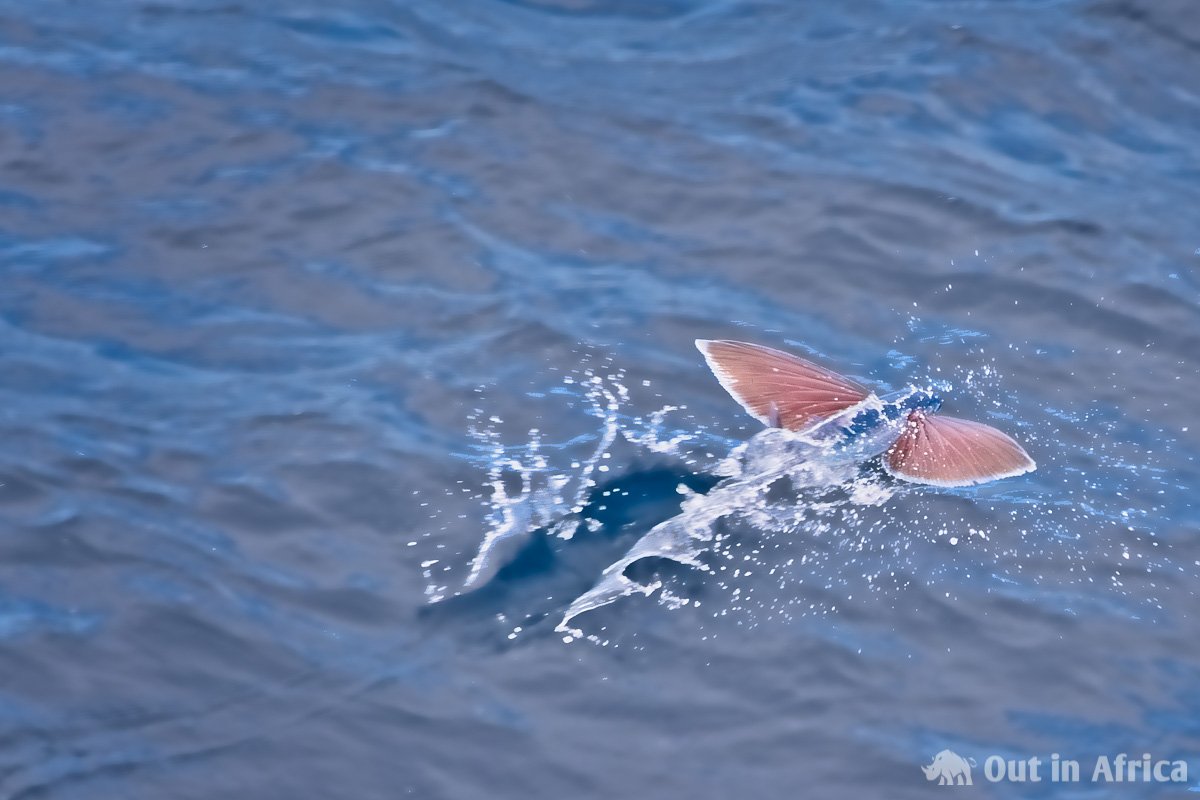
Even if I only watched the fish, I didn’t always notice the details. Flying fish are small, and the bow was 10 m or more above the water. I most of the time registered only the wing colour and sometimes also the body colour.

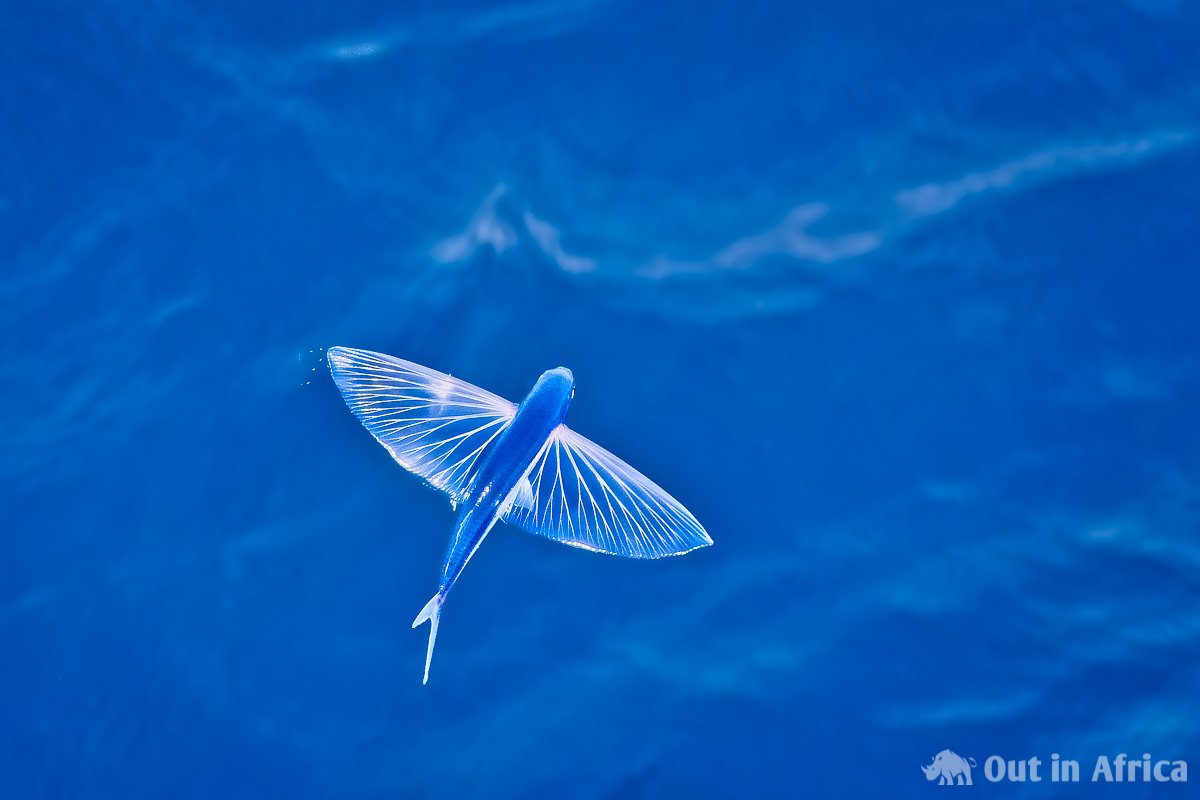
I decided to identify the fish as soon as I could get back on the Internet. There would undoubtedly be websites, just like there are for birds, that would inform me about any species! So I thought.
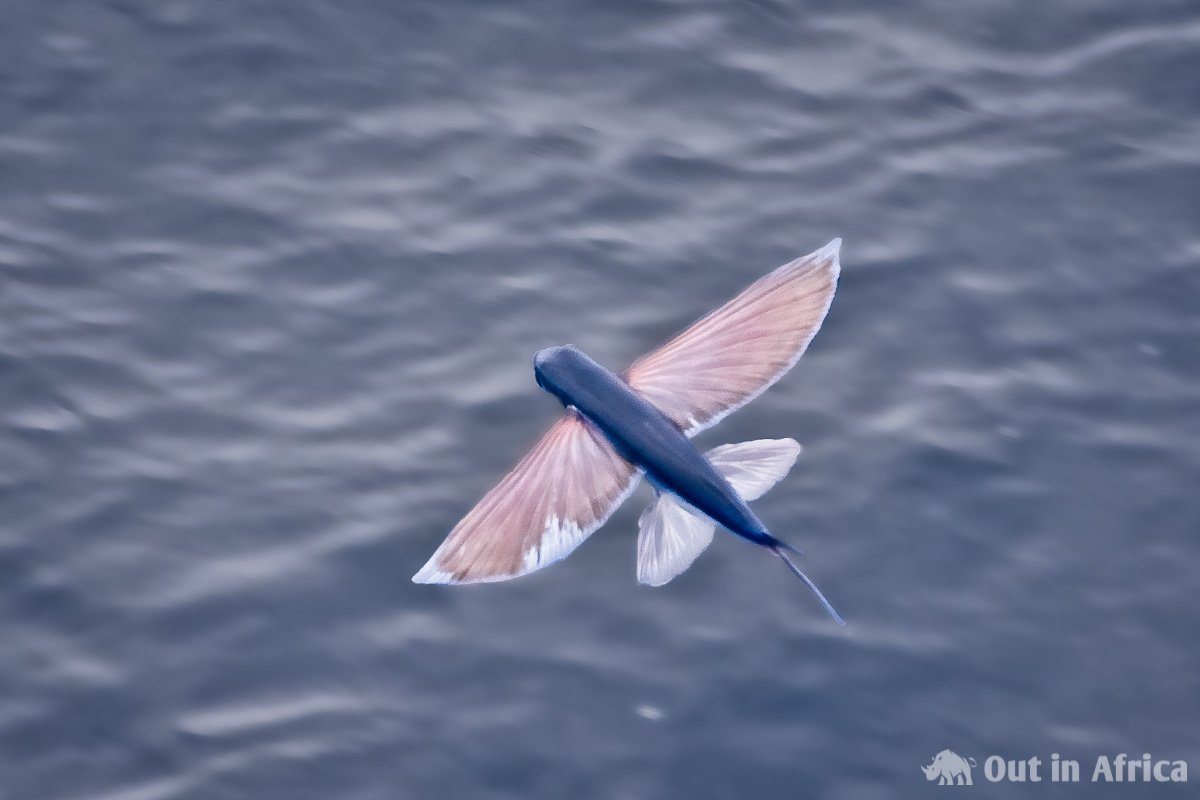
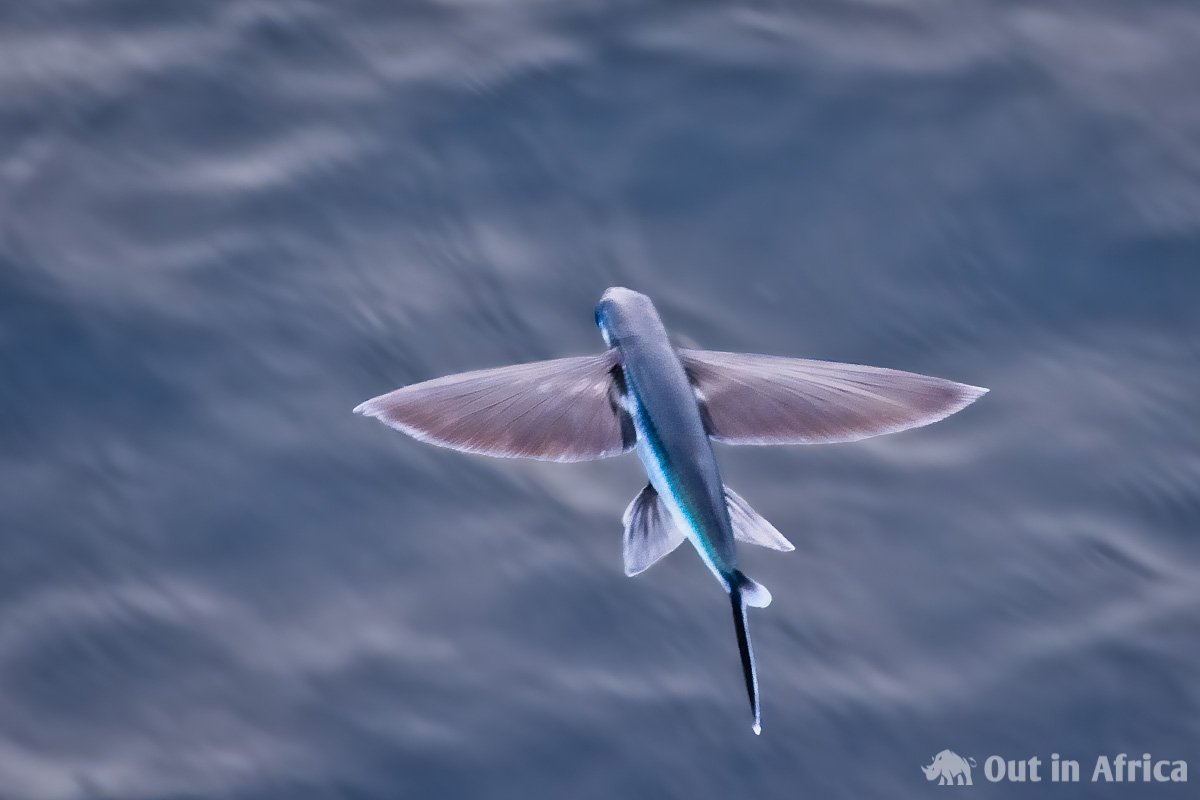
To my astonishment, the information on the Internet about flying fish is very scarce. Either there are photos like mine, but they don’t identify the species photographed, or there are detailed descriptions, down to the individual scales, but there are no pictures to help me identify my fish.
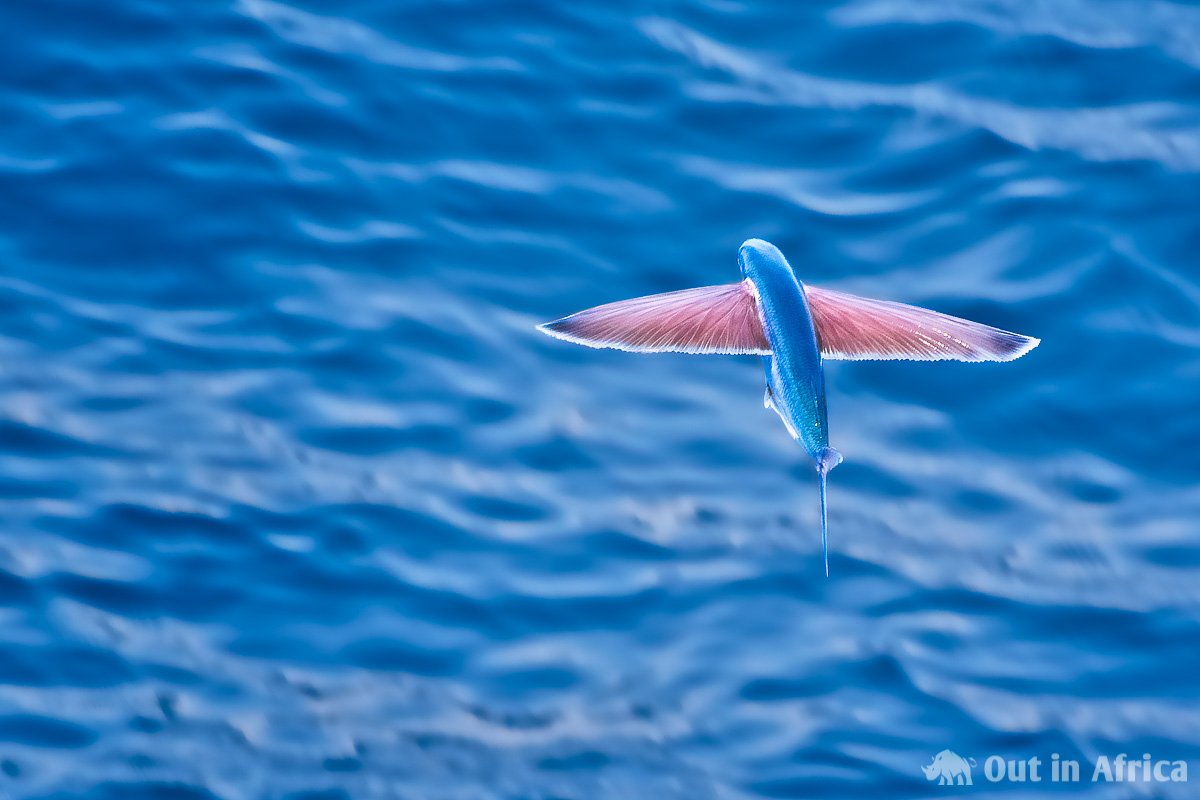
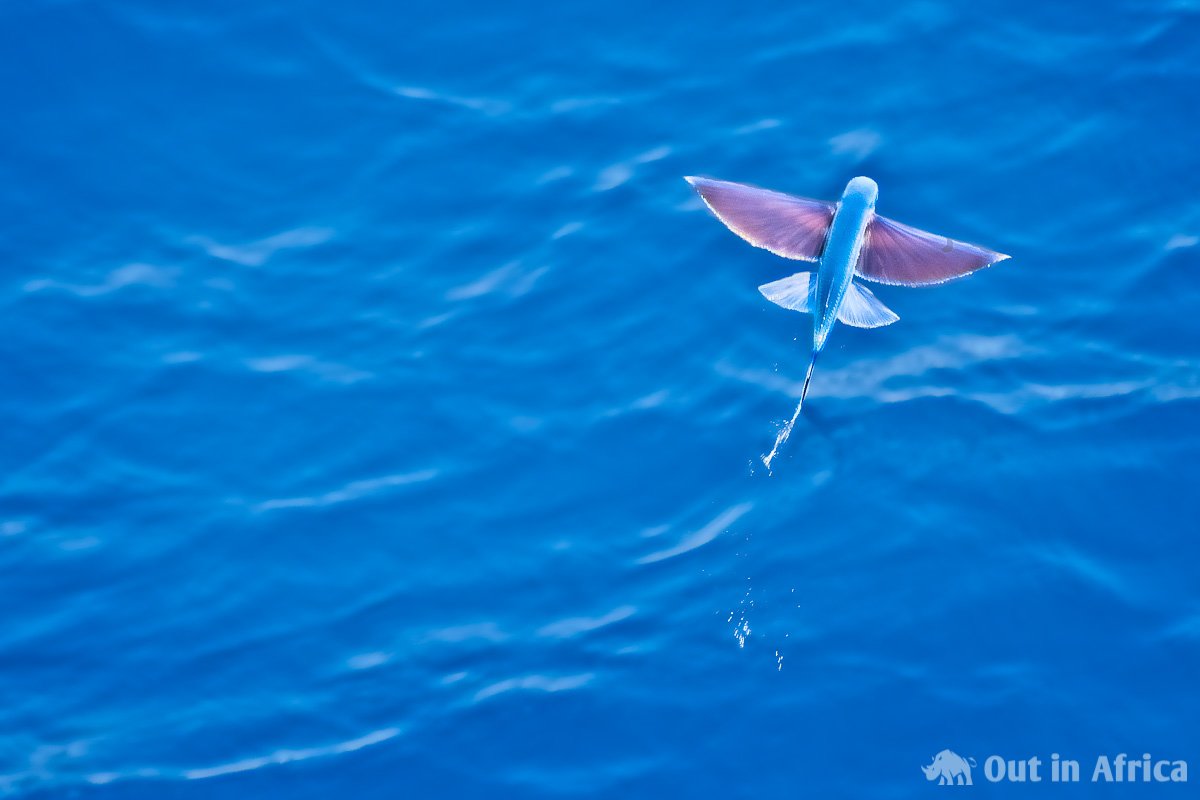
The problem is: scientific descriptions are mostly done with dead animals. But flying fish lose their colours as soon as they die. Furthermore, a flying fish that has its wings spread out looks different than a dead fish. The reality at sea and the facts of marine biologists have not yet been brought together.
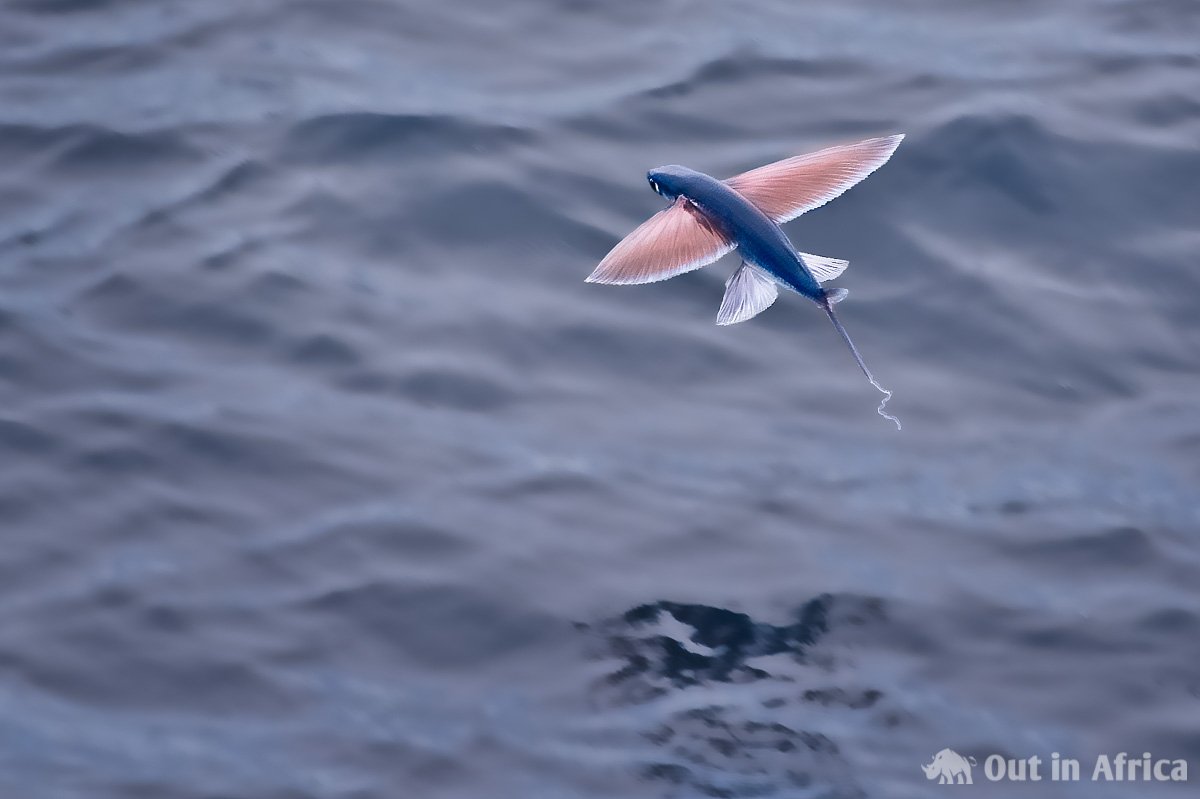
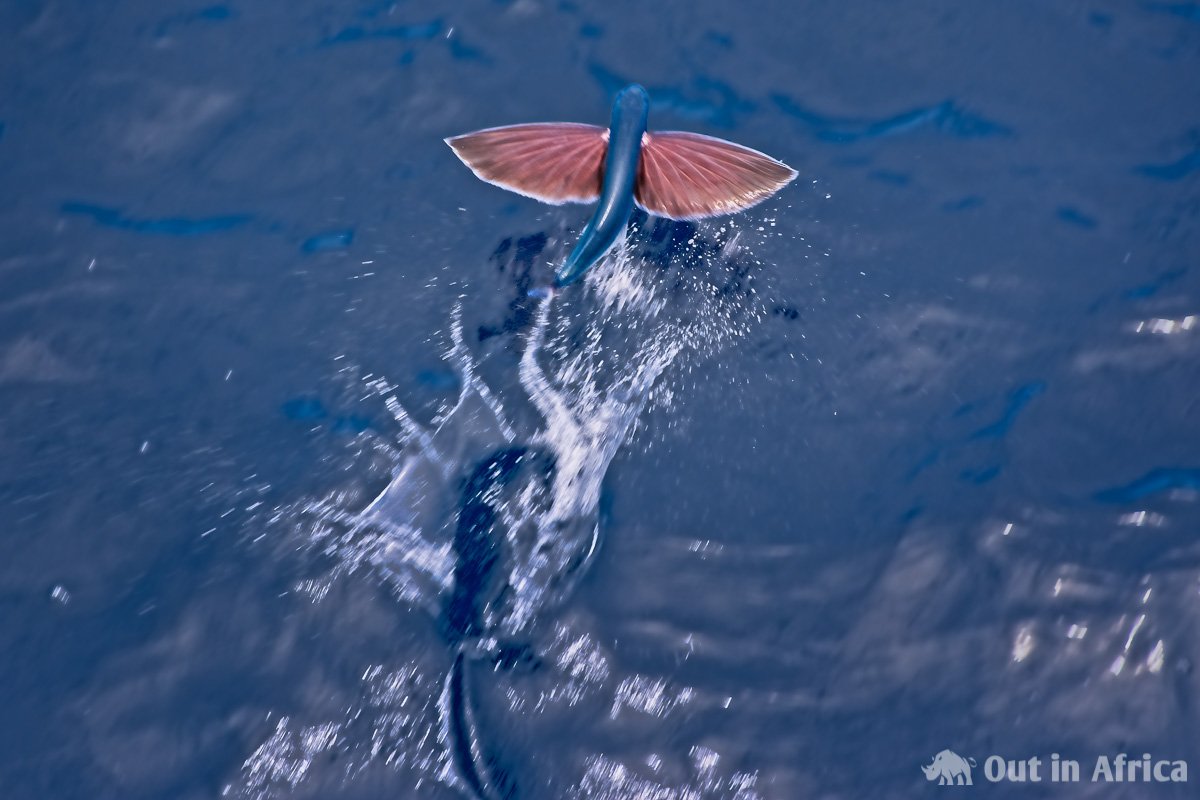
While editing my photos, I noticed many details that I could not see high up on the bow of the ship. These details, together with the little bit of information I could find, I want to summarize here.
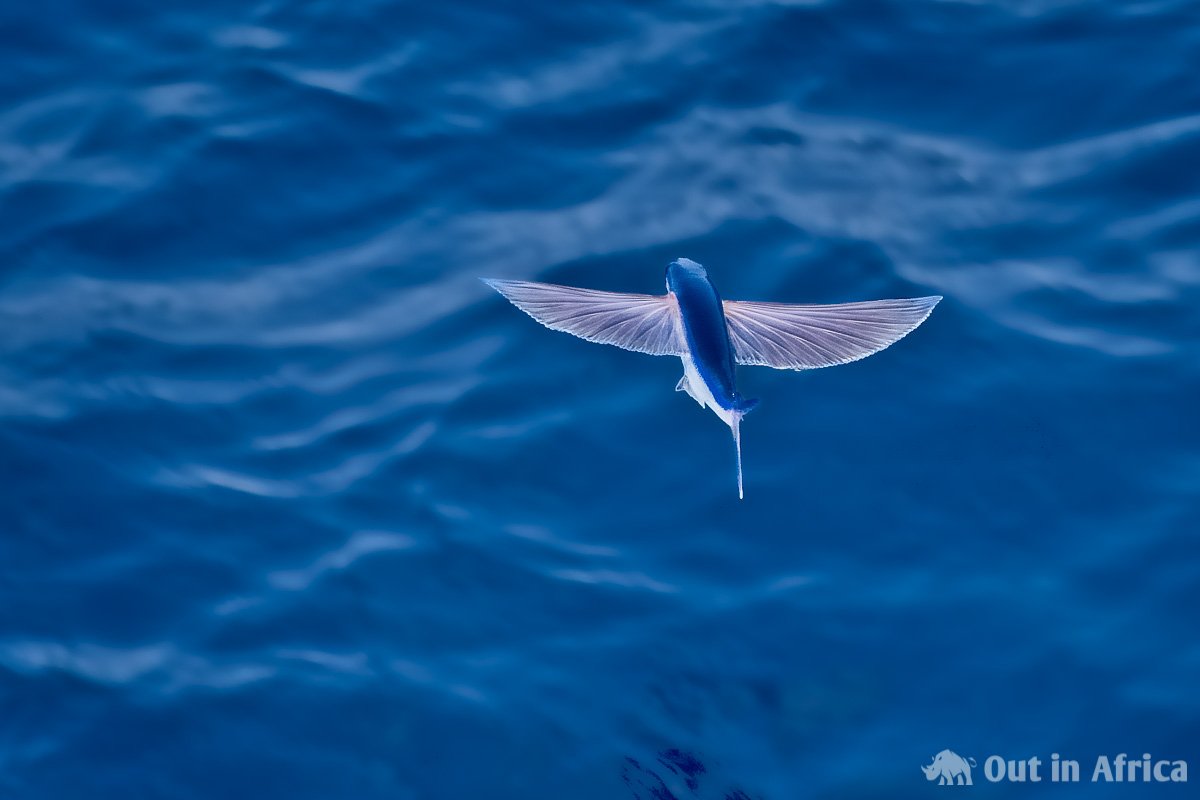
Names
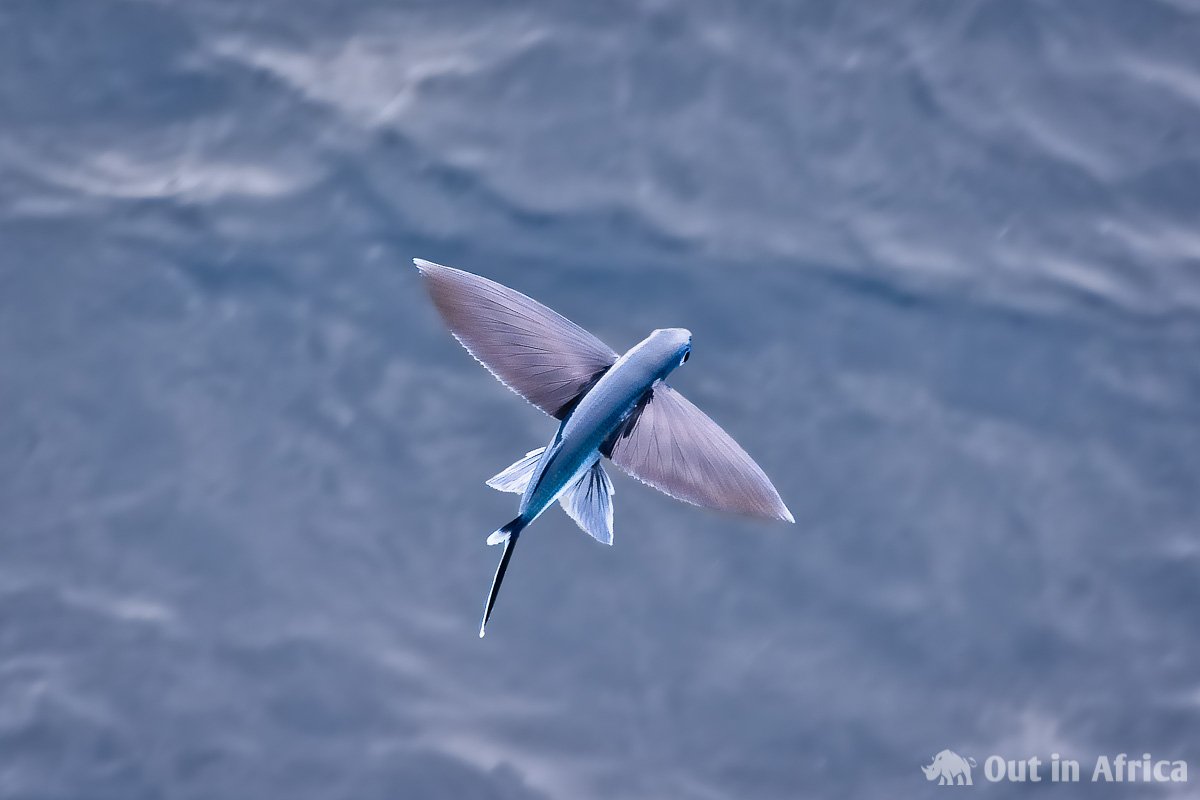
Many inaccuracies can already be found in the identification of species. We are talking about 50 to 70 species.
Sometimes it is not known whether two different looking fish are different species or only different age groups. Flying fish change their colour in the course of their life.
The species identified by scientists have, of course, a scientific name. But unlike birds, there are no German or English names.
In the end, I gave my own German and English names to the species I saw. Experts may please (!!!) correct me.
1. Brownwing
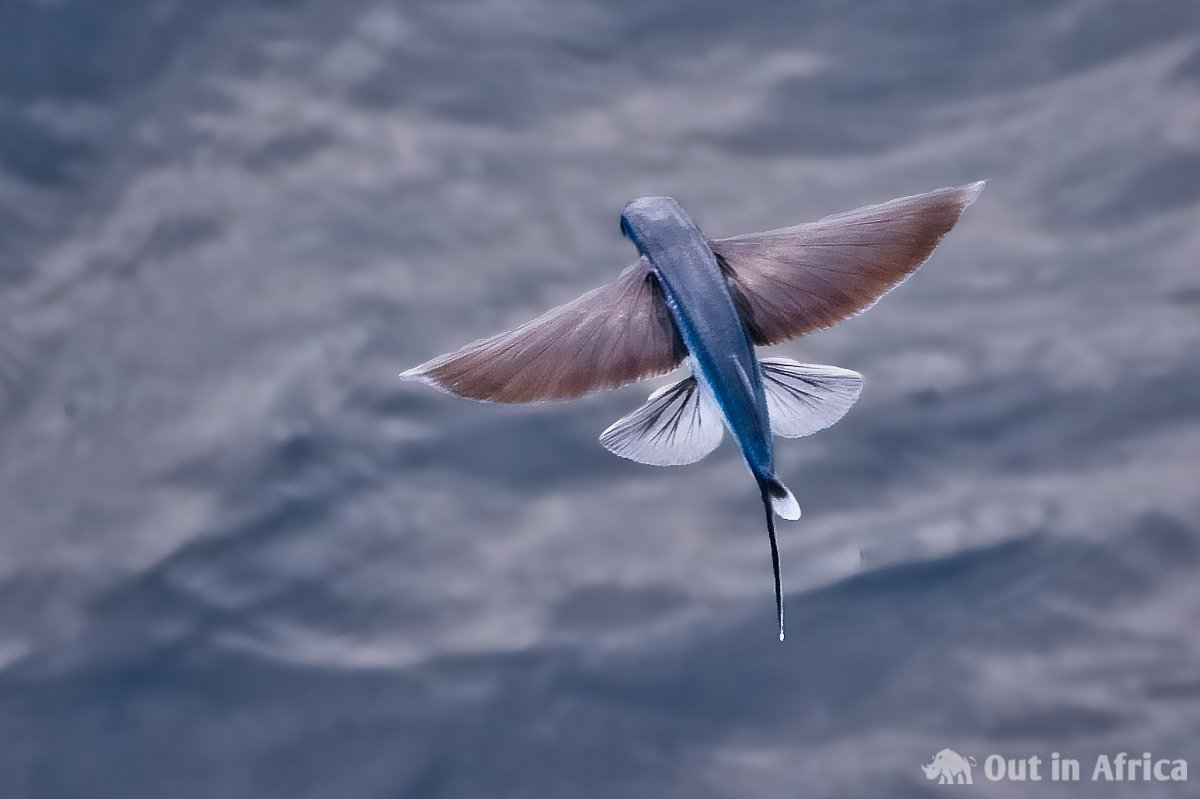
Brownwings were common. They have dark brown wings. The wing ribs are not as visible as in the other species. This gives their wings a smooth, leathery appearance.
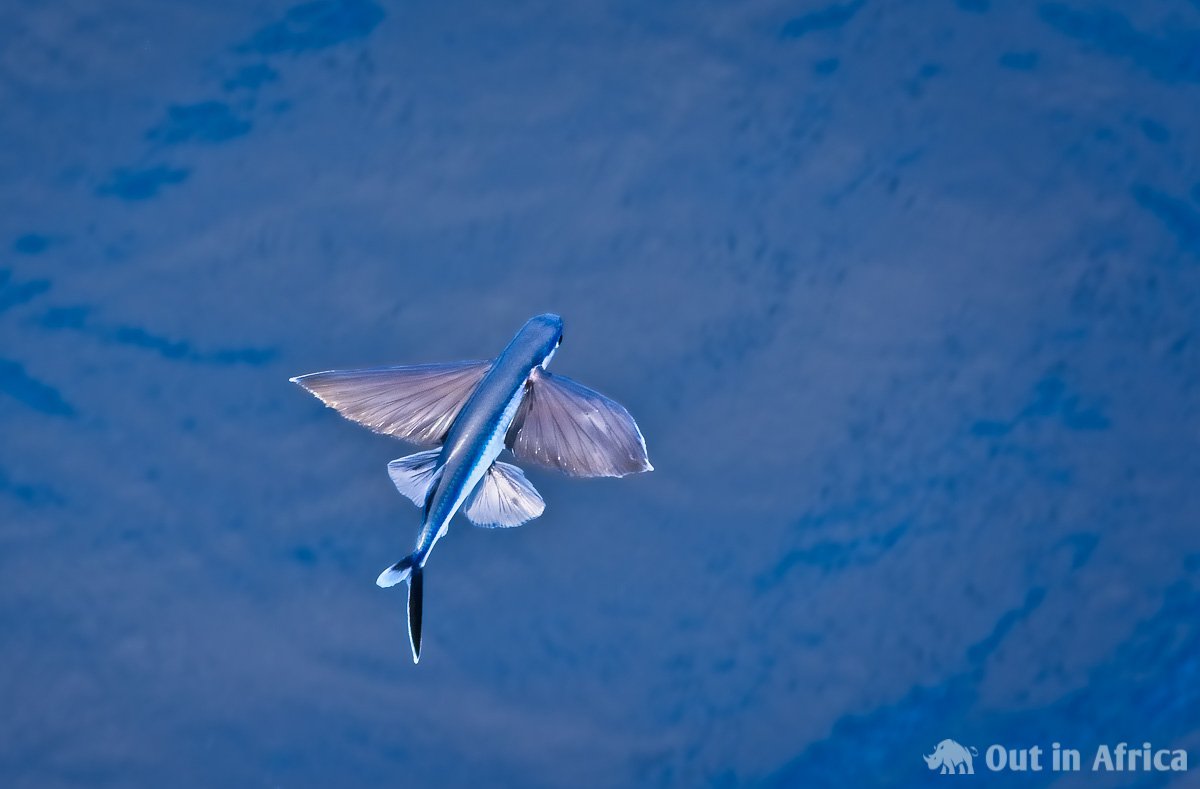
2. Rustwing
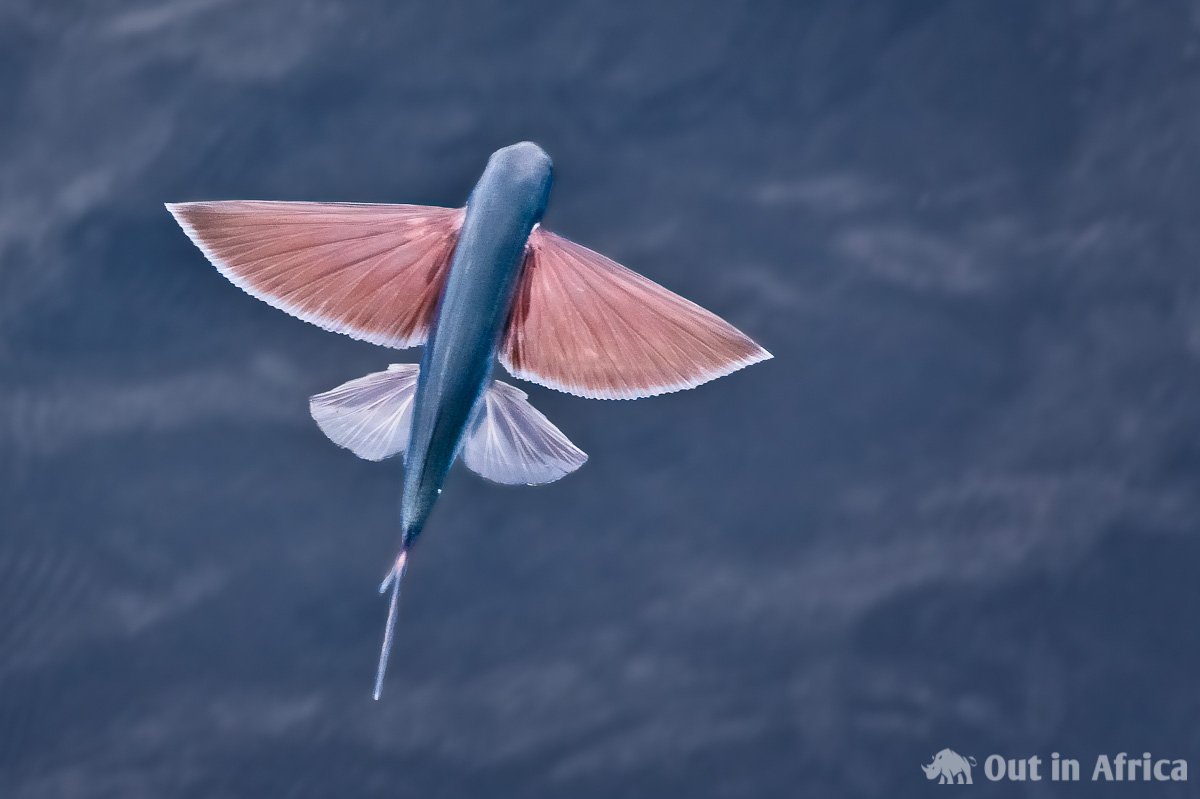
This the species I’ve seen the most. They have rusty-brown wings, which are set off with a white border.
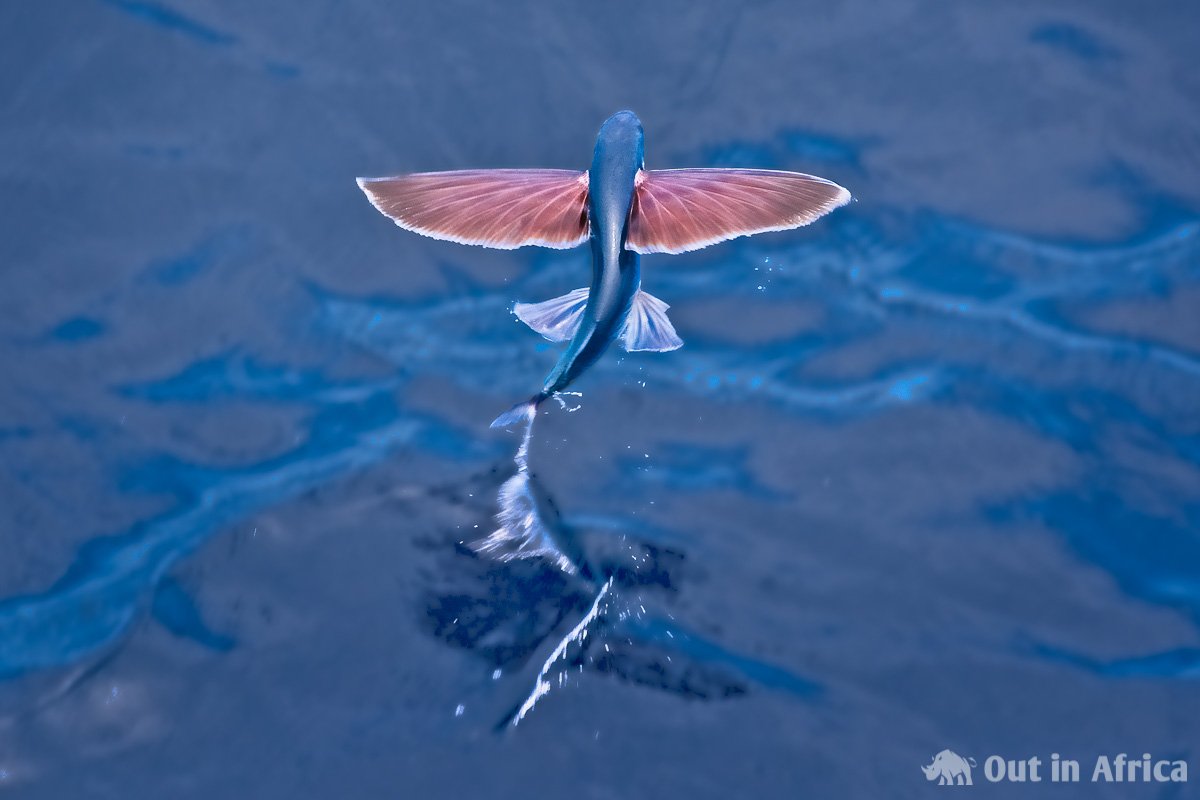
3. Windowwing
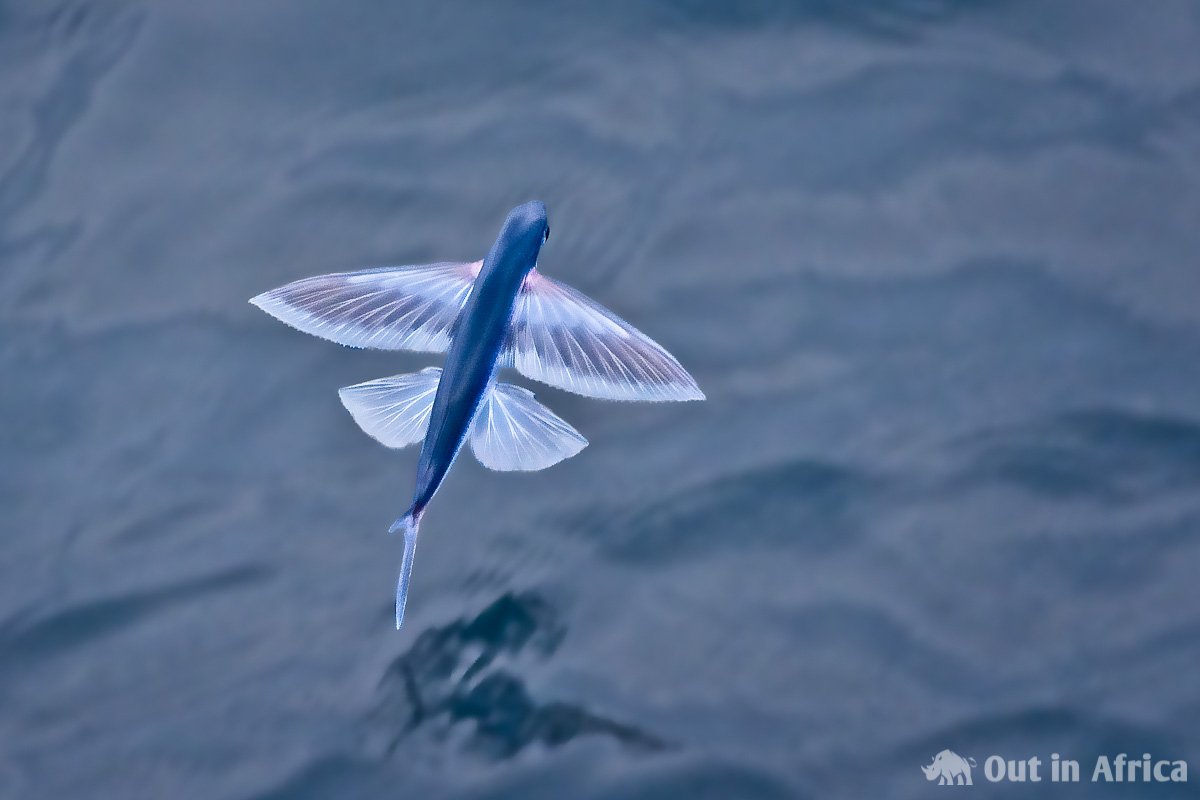
Windowwings look almost like rustwings, and maybe it’s the same kind. But they have a lighter stripe across their wings that gives them a “window”. Furthermore, the colour of the wings is light brown rather than rusty brown.
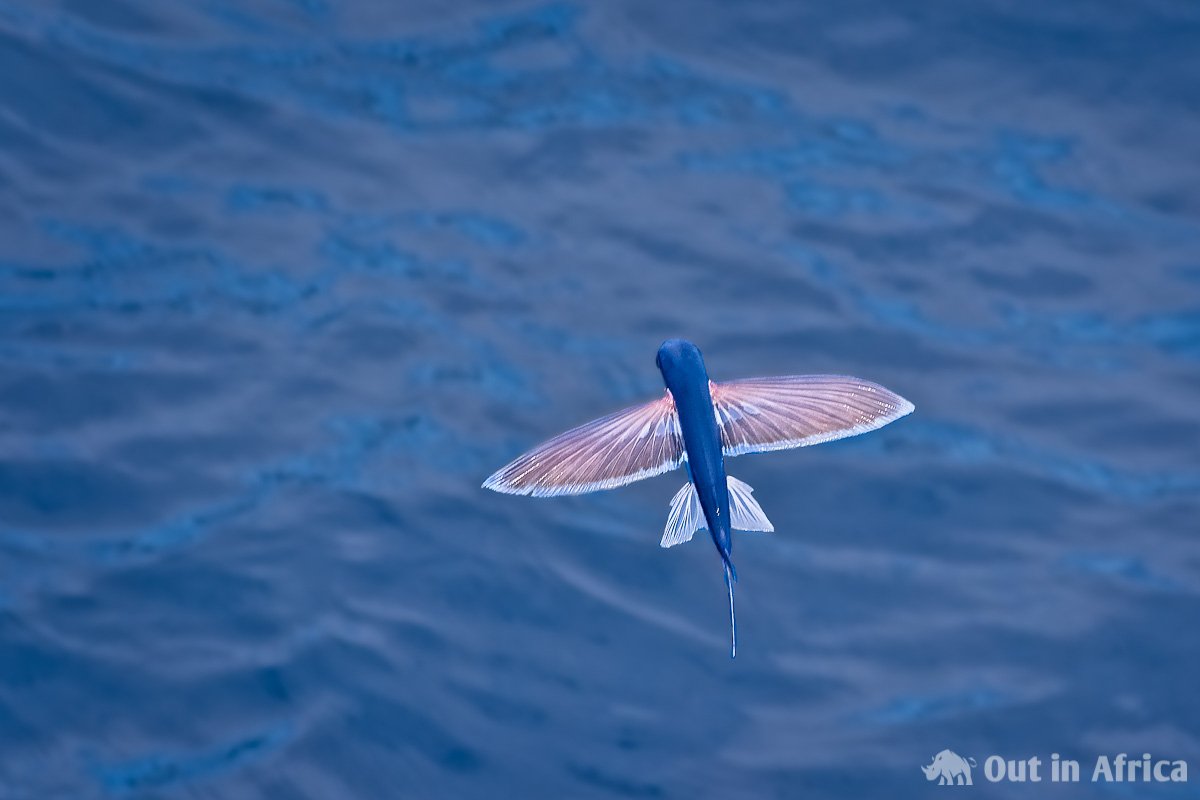
4. Whitewing
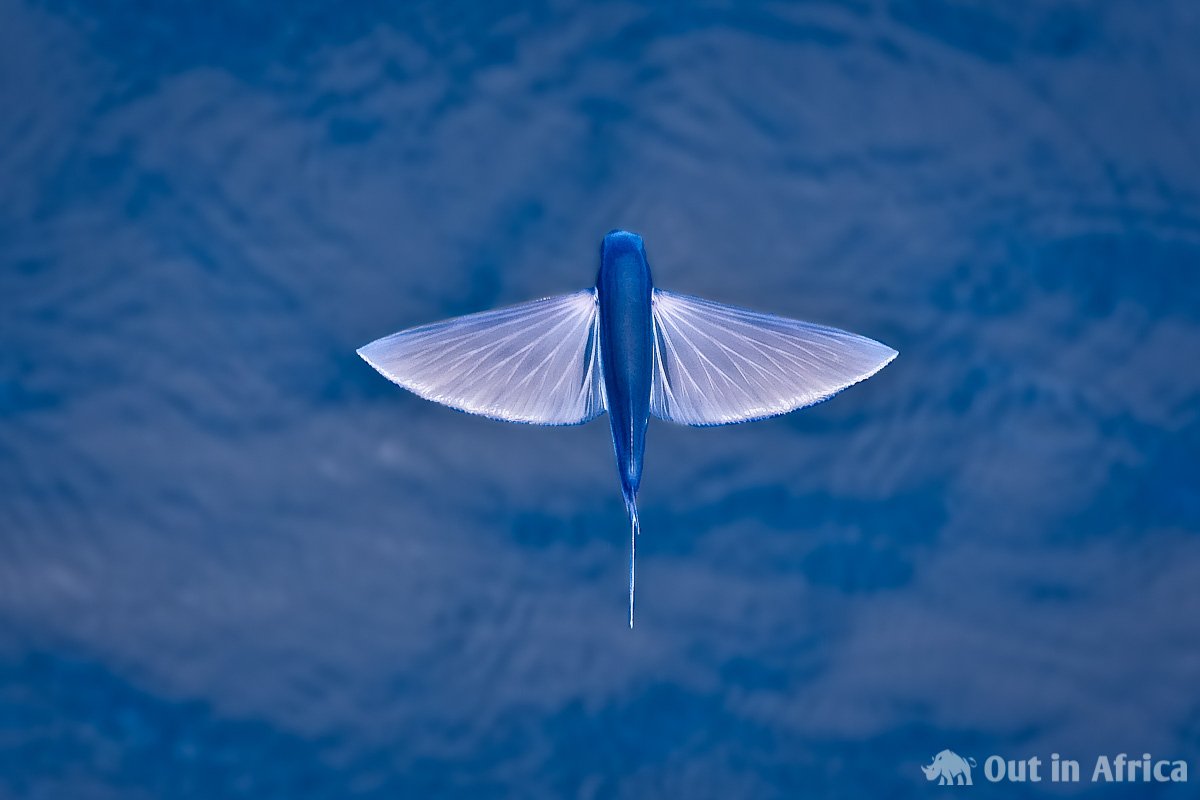
Seen from the ship, these fish had white wings, but if you look closer, they are sometimes translucent.
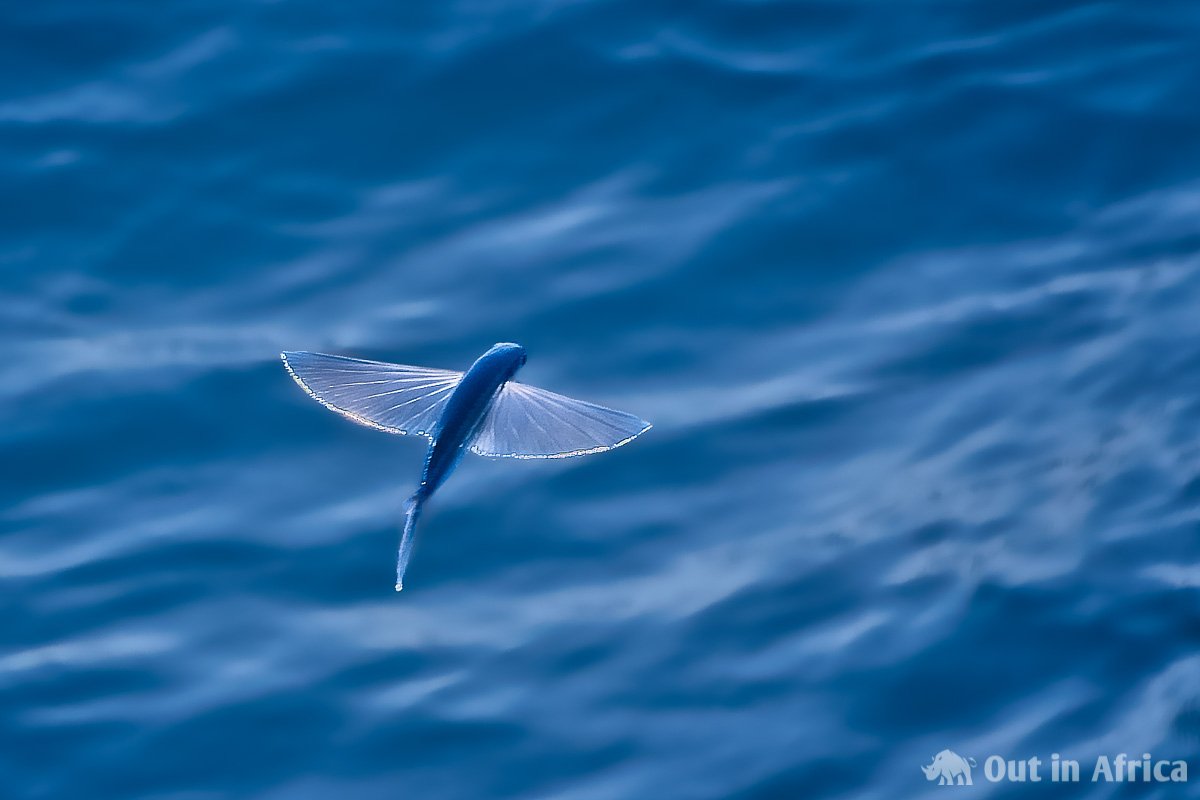
5. Bluewing
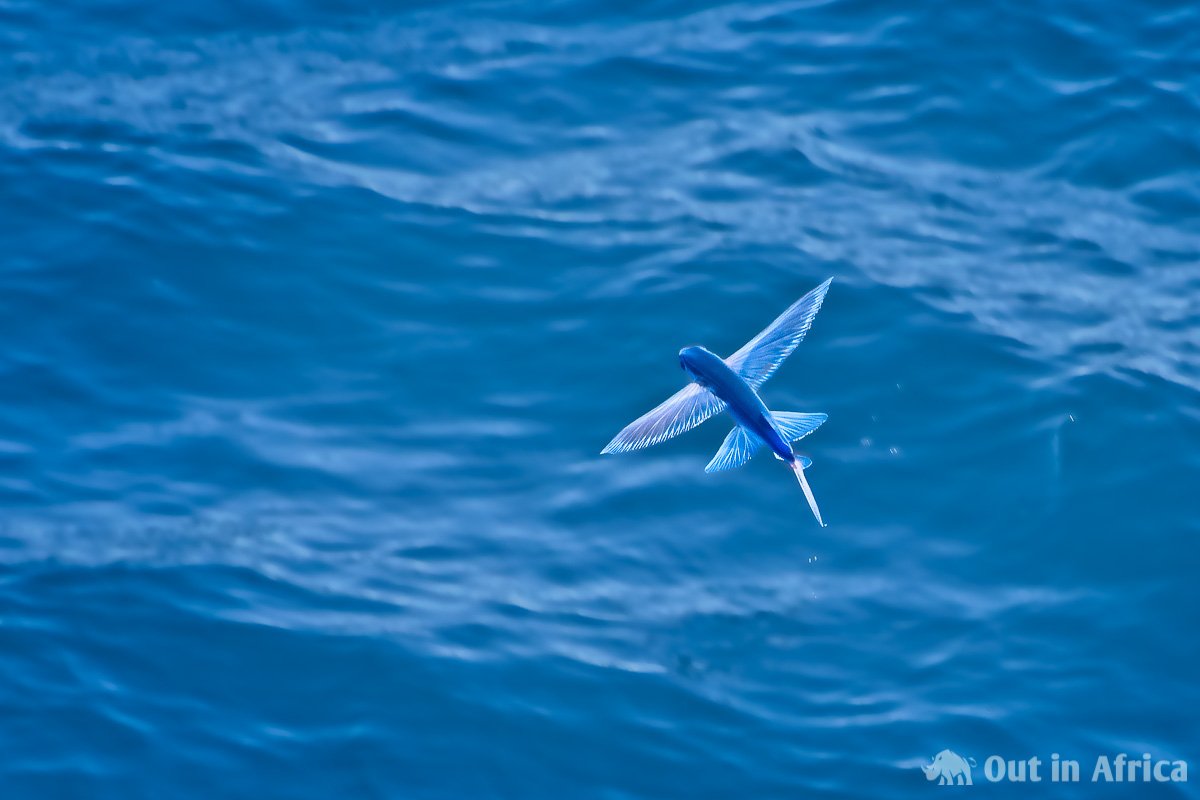
We have seen these fish regularly, but only occasionally and rarely. I have only one photo of which I think is a bluewing. But in my memories, they had deep blue wings.
6. Leopardwing
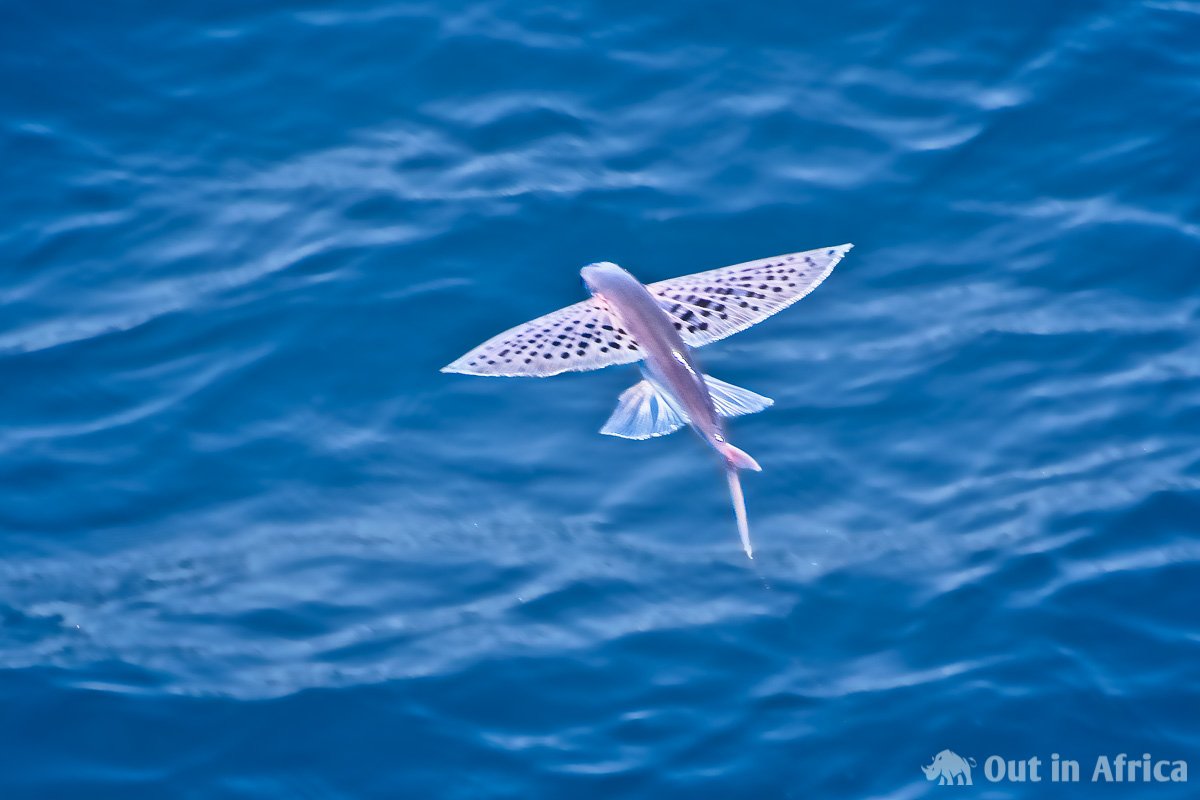
I have seen this fish only once and am happy to have photographed it. For the few seconds I saw it, I noticed two things in particular: it was huge – twice as big as the leatherwings and the rustwings and it had a light yellow-orange-brown colour. I didn’t see that the wings were spotted until I looked at the photos.
Four or two wings
Maybe it’s already been noticed: There are flying fish that fly with four fins – I call them four-winged – and those that operate with only two fins – the two-winged fish.
Only the whitewings are two-winged. All other species are four-winged.
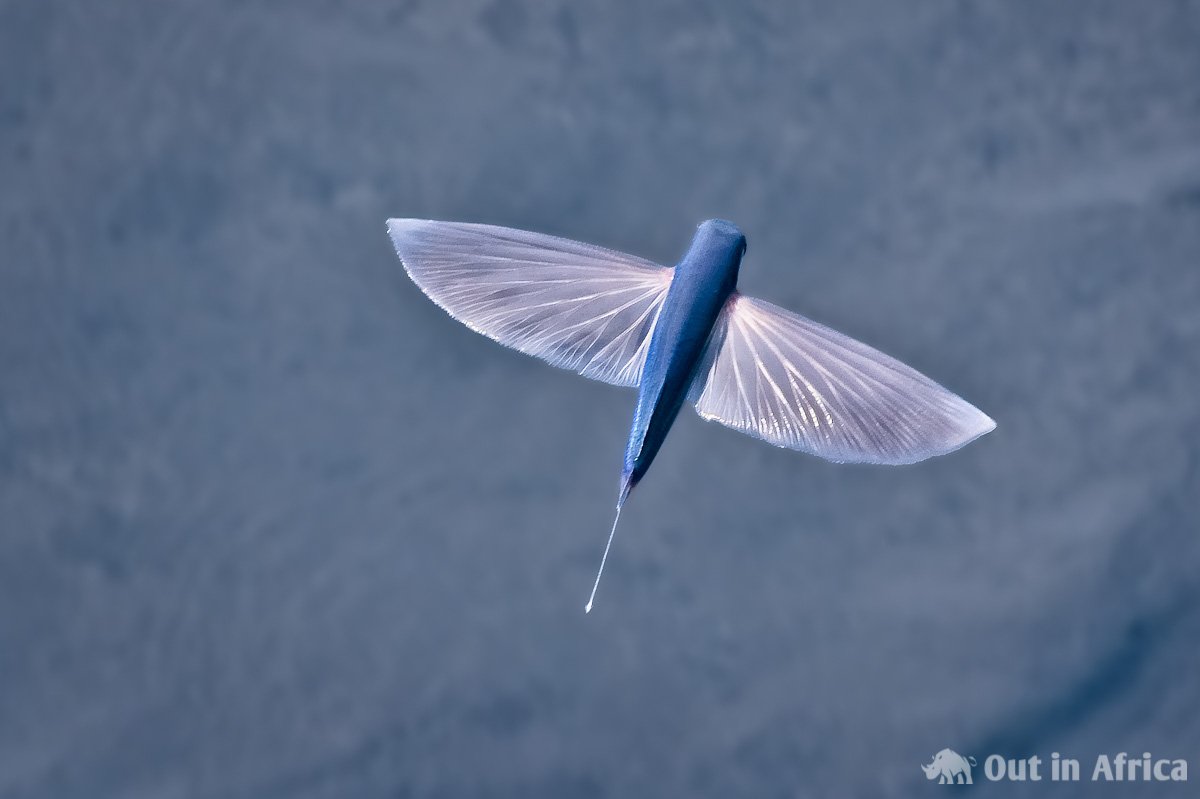
Four-winged fish have slimmer arm fins than two-winged ones. Because they also spread the anal fins to fly, they can glide further than two-wings.
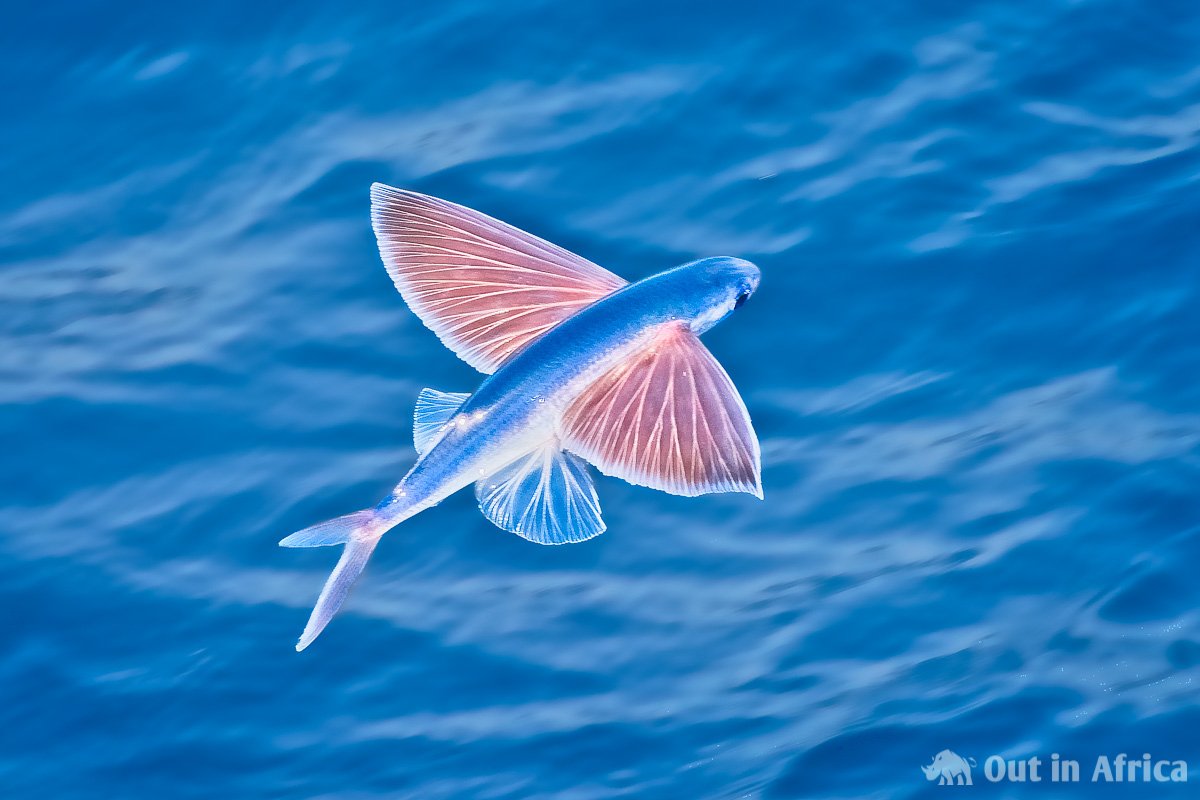
Since four-winged fish stay above water longer, they are easier to photograph. I had to practice for a long time until I had useful photos of the whitewings on the memory card.
How do flying fish fly?
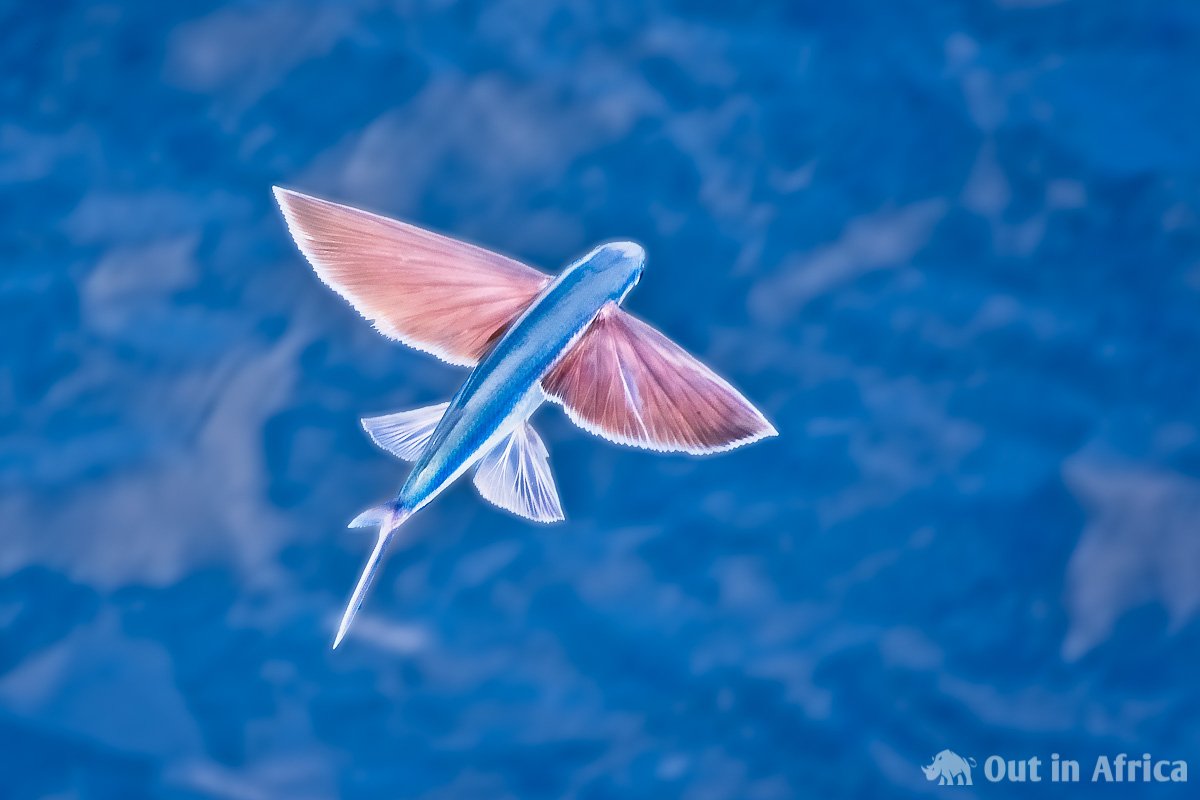
When the pioneers of aviation developed their first aeroplanes, they looked into nature to explore how animals manage to fly. Although birds may have awakened the desire to fly in humans, they were not the ones who determined the design of aeroplanes. The flapping flight of birds is too jerky and requires too much energy.
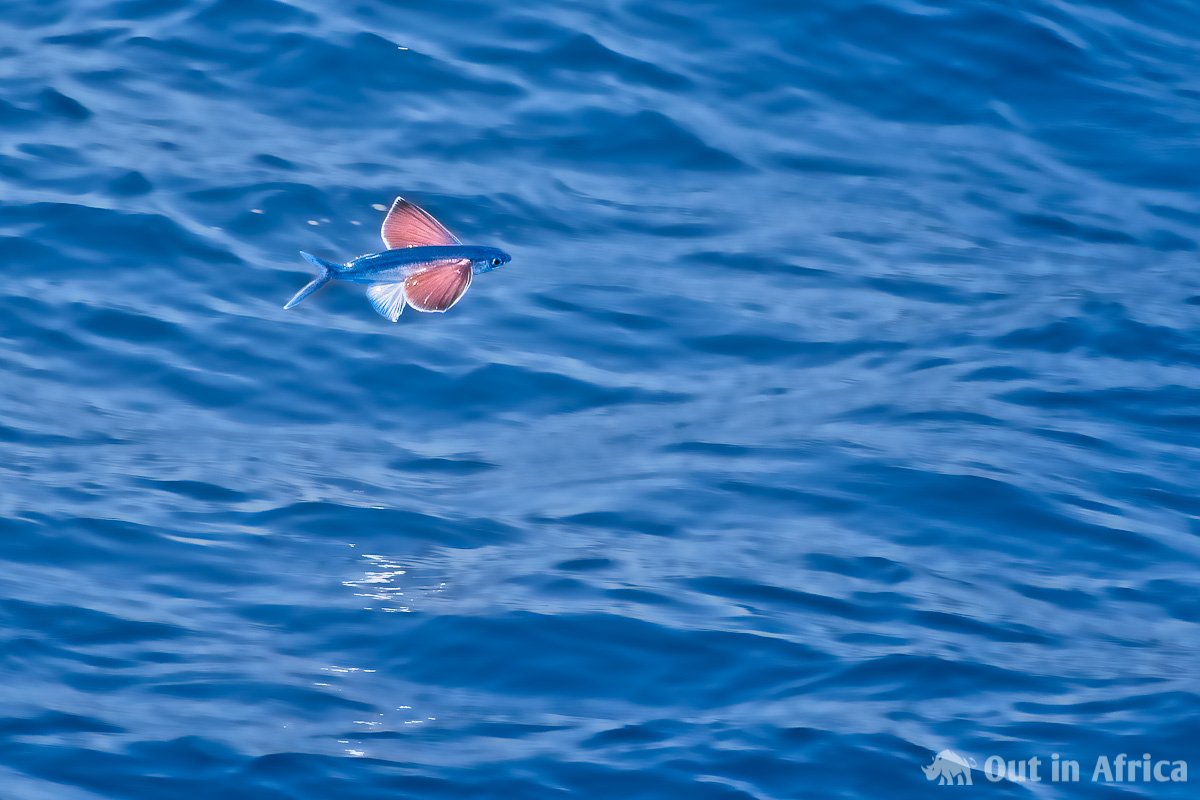
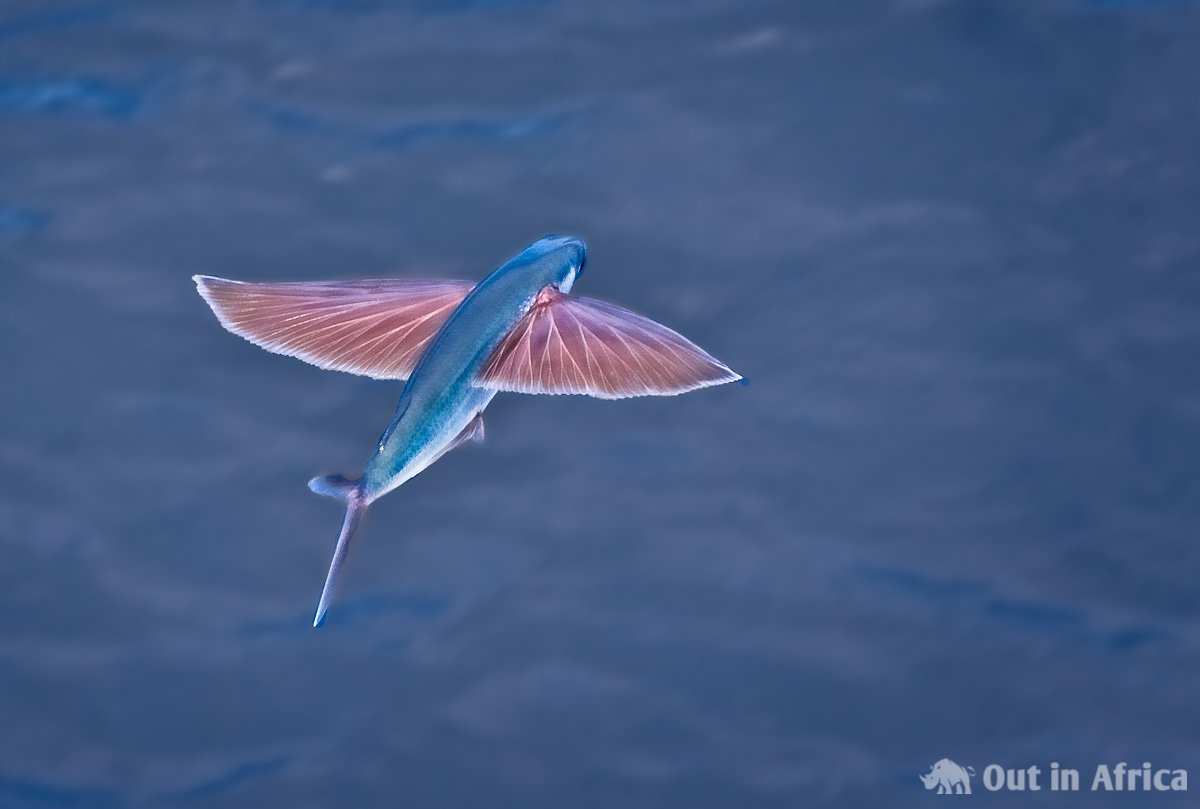
Flying fish do not flap their wings. They glide.
The gliding flight of flying fish is a smooth kind of flight, and it does not require so much energy.
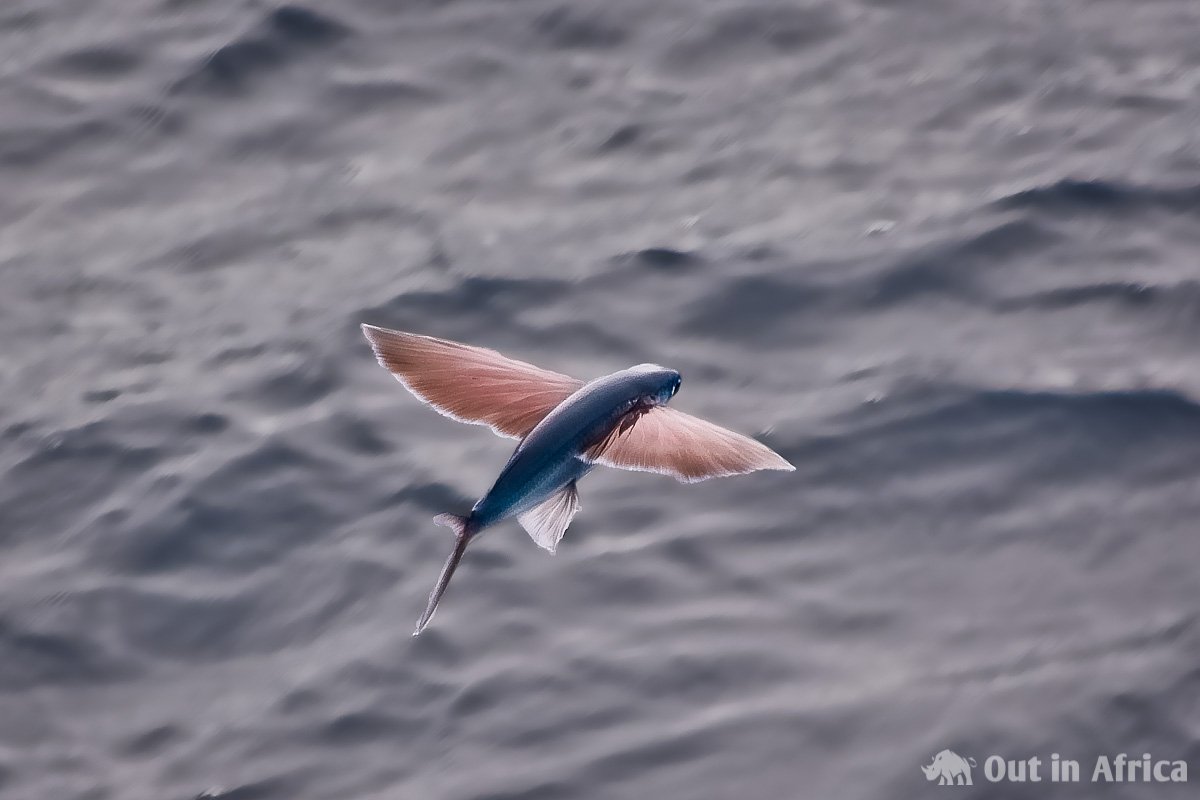
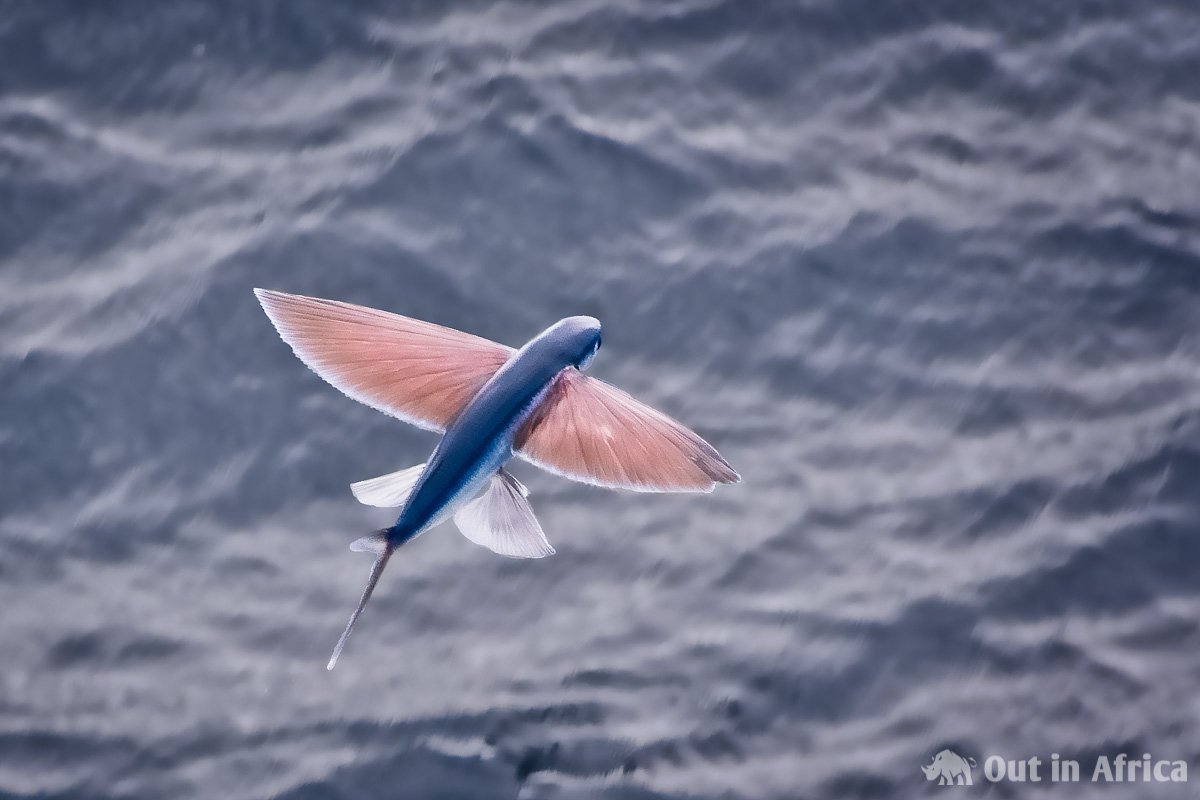
It is, therefore, no wonder that the shape of modern aeroplanes resembles that of flying fish.
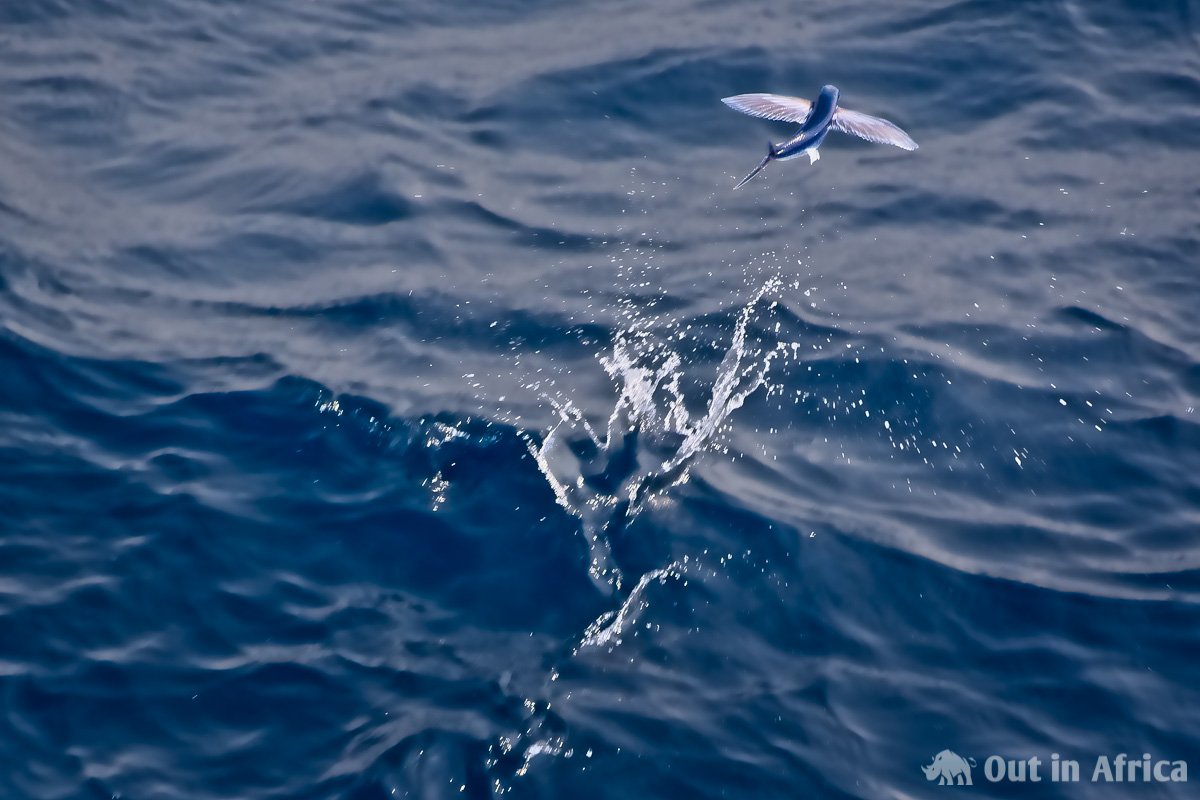
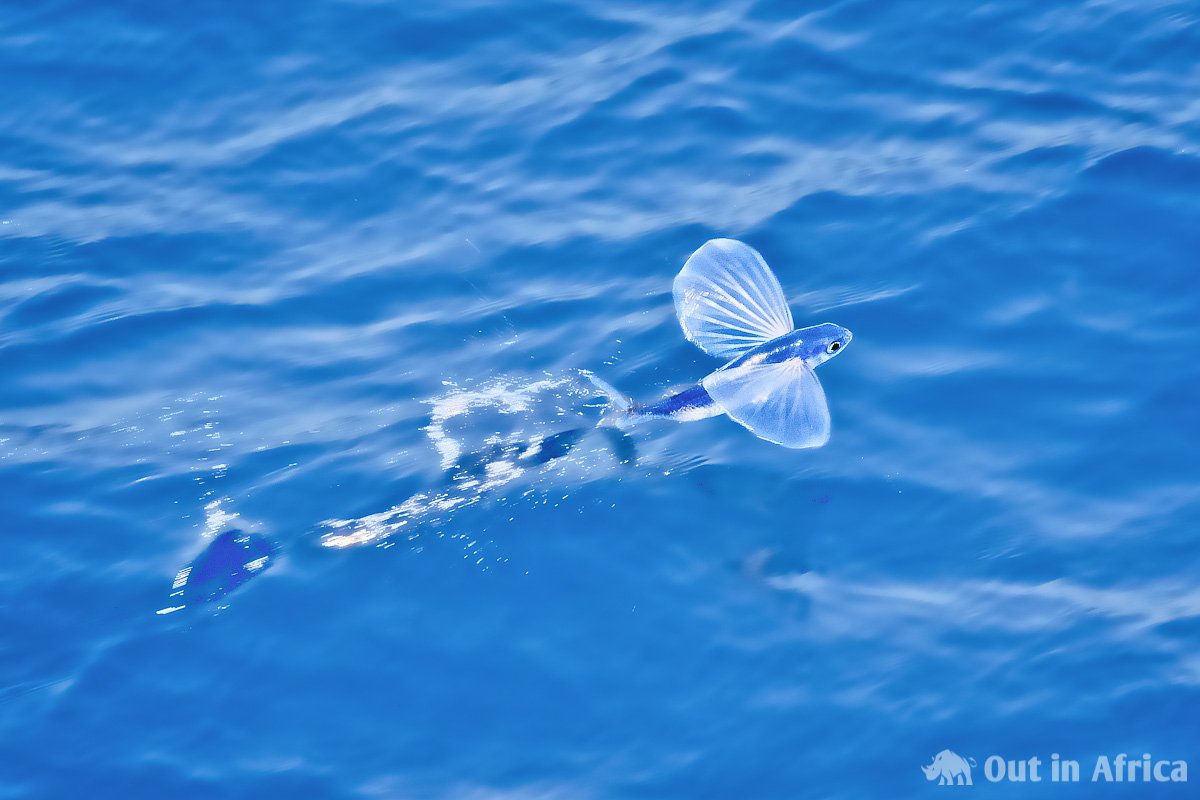
Through fast lateral movements of the tail, they increase in speed. Their body comes out of the water, they spread their wings, and with enough speed, they start gliding.
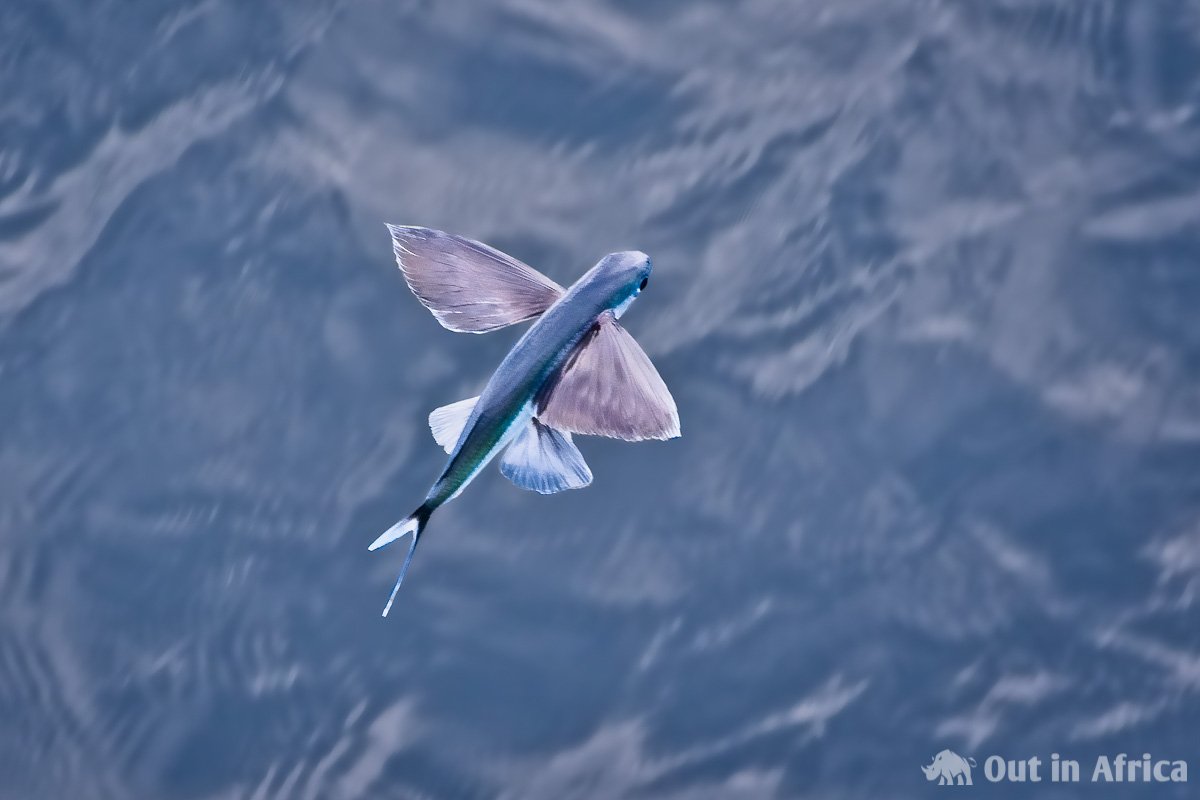
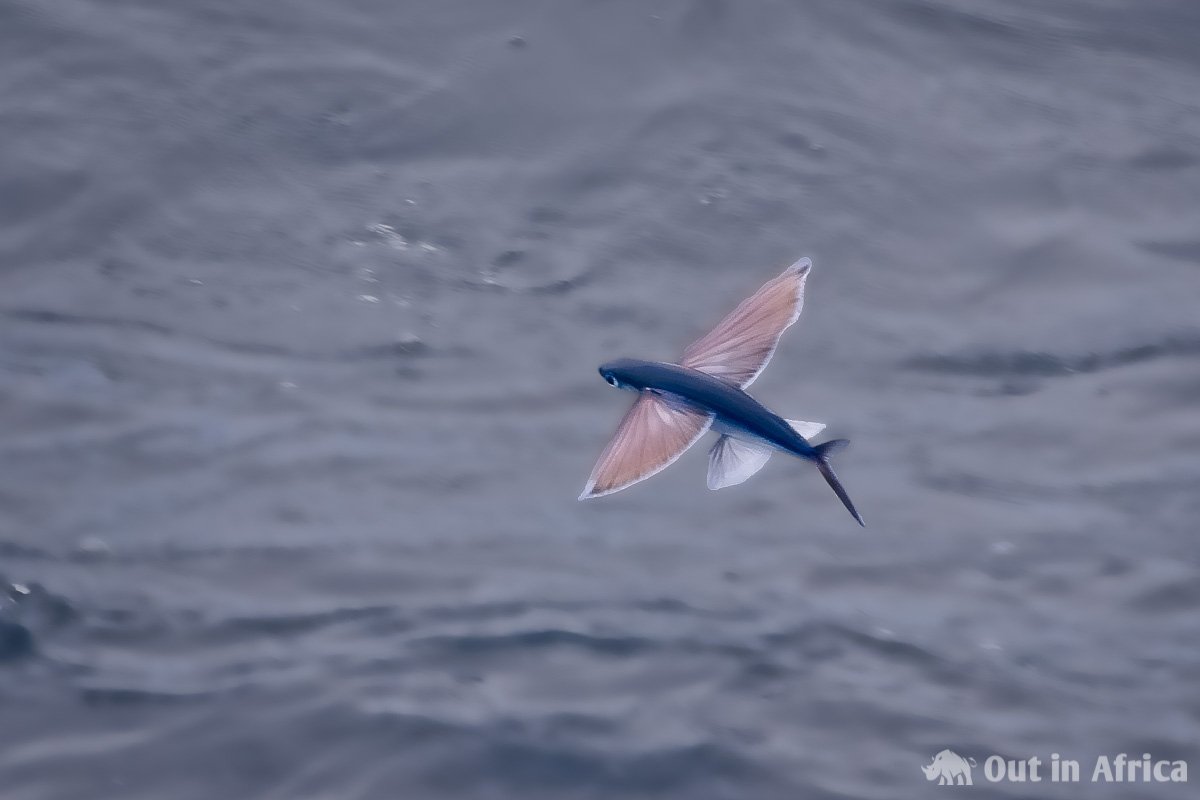
When they lose height and return to the surface, they flap their caudal fin again, gaining uplift.
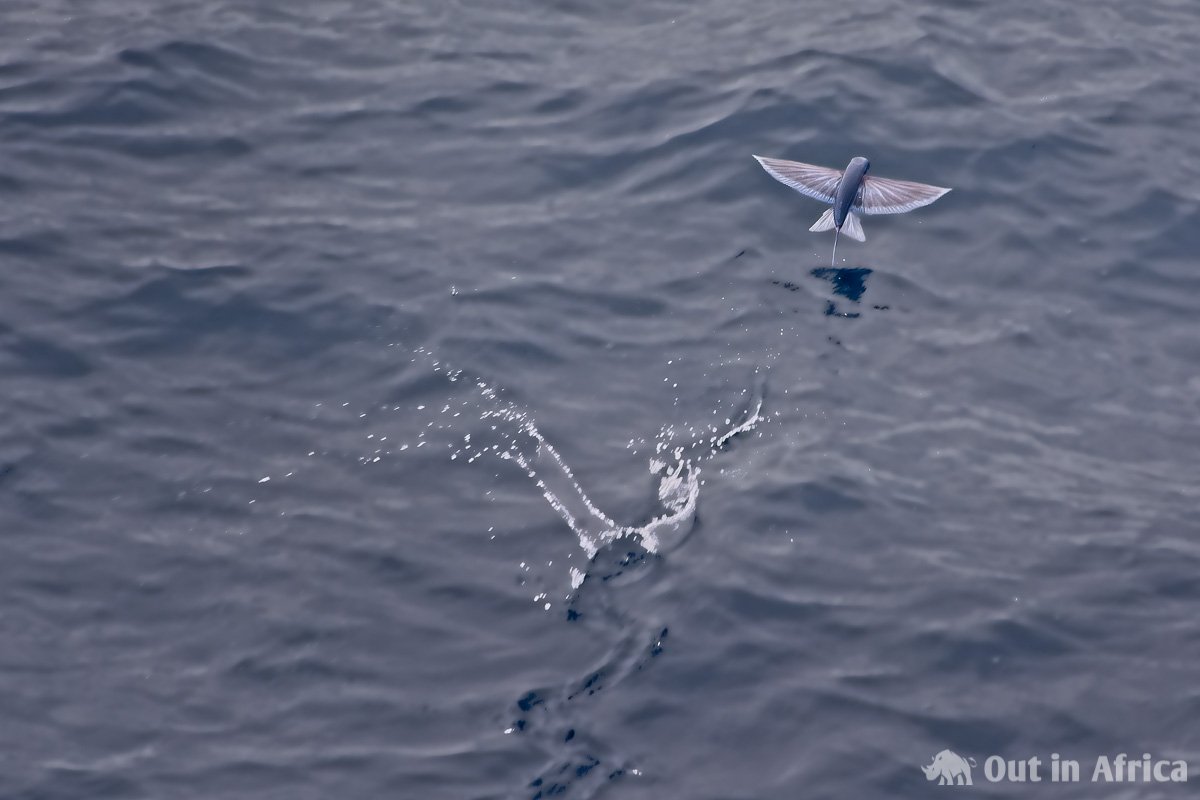
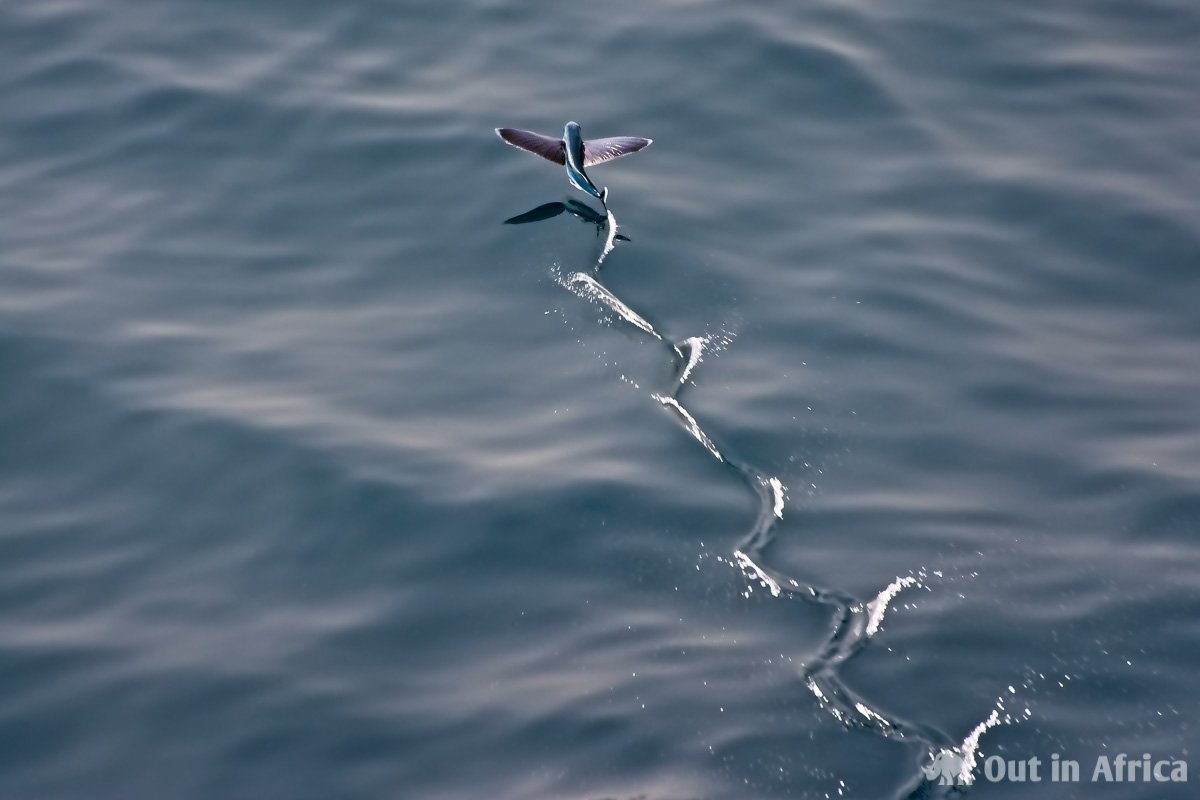
The tail fin strokes create the typical zigzag pattern on the water surface.
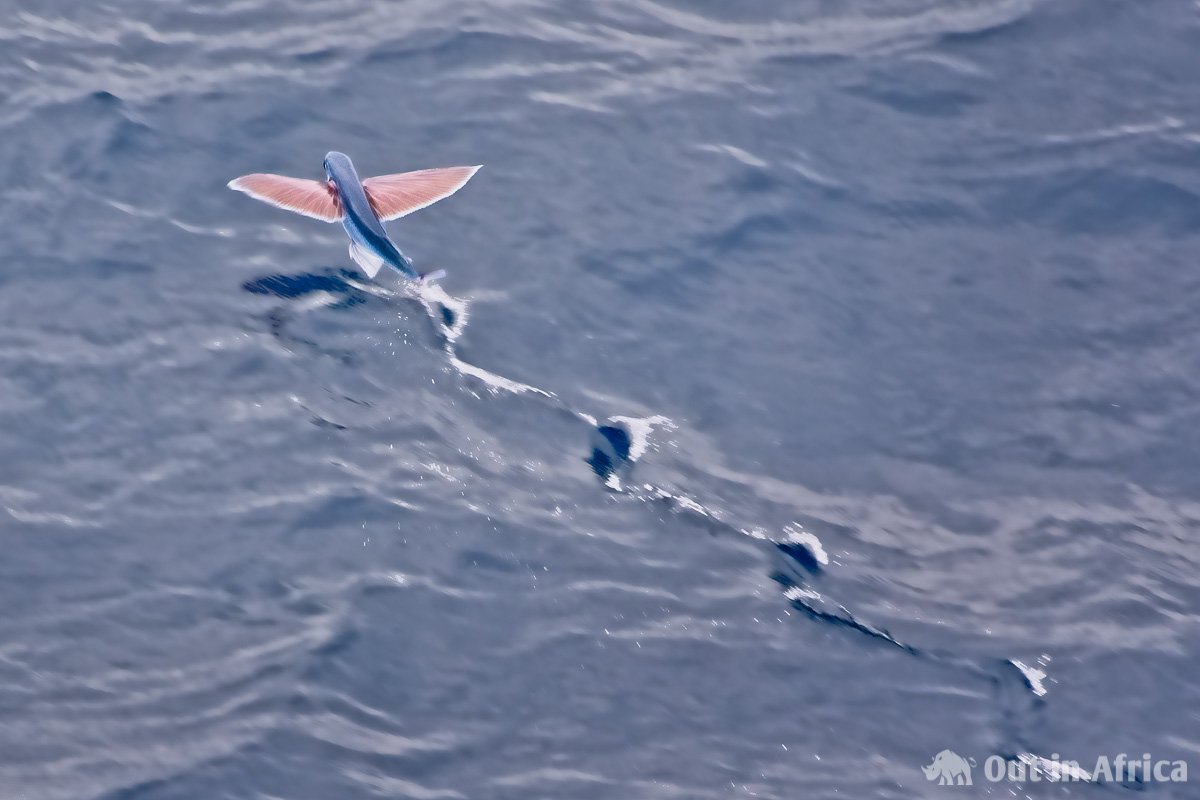
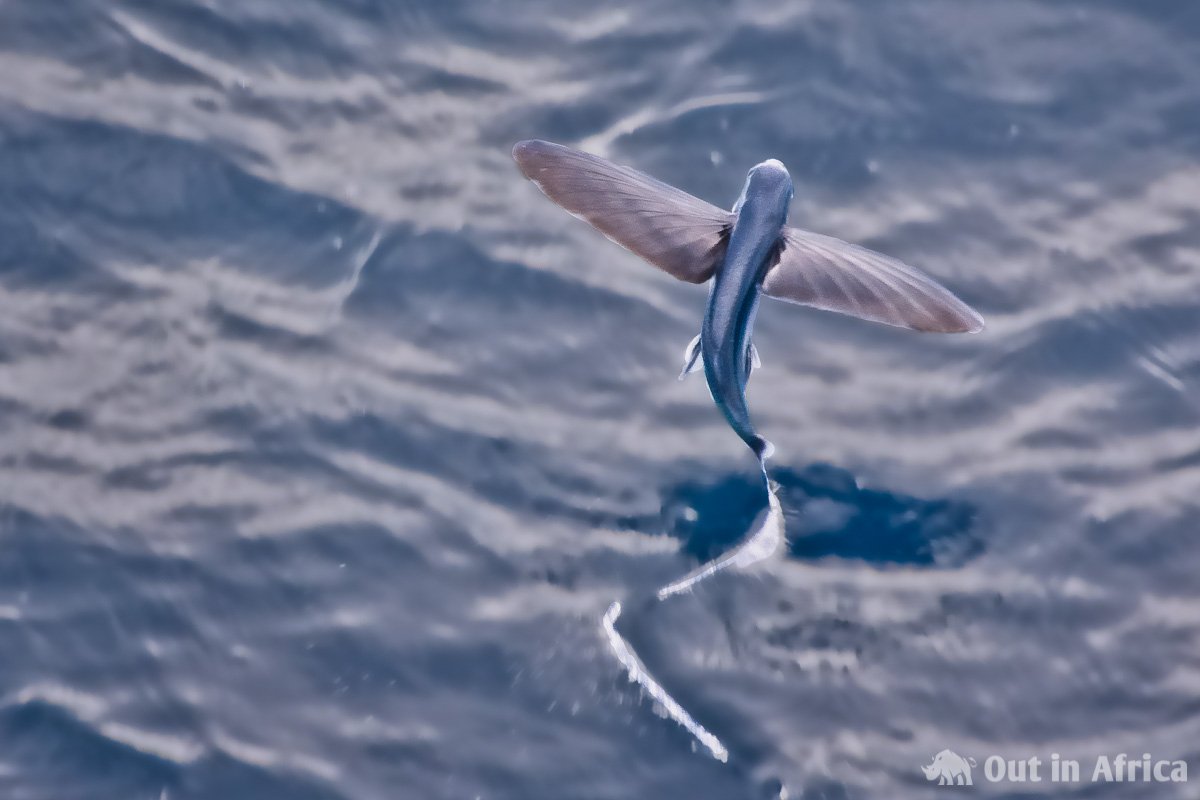
Especially the four-winged fish can fly rather far, repeatedly interrupted by tail strokes on the water surface to gain height.
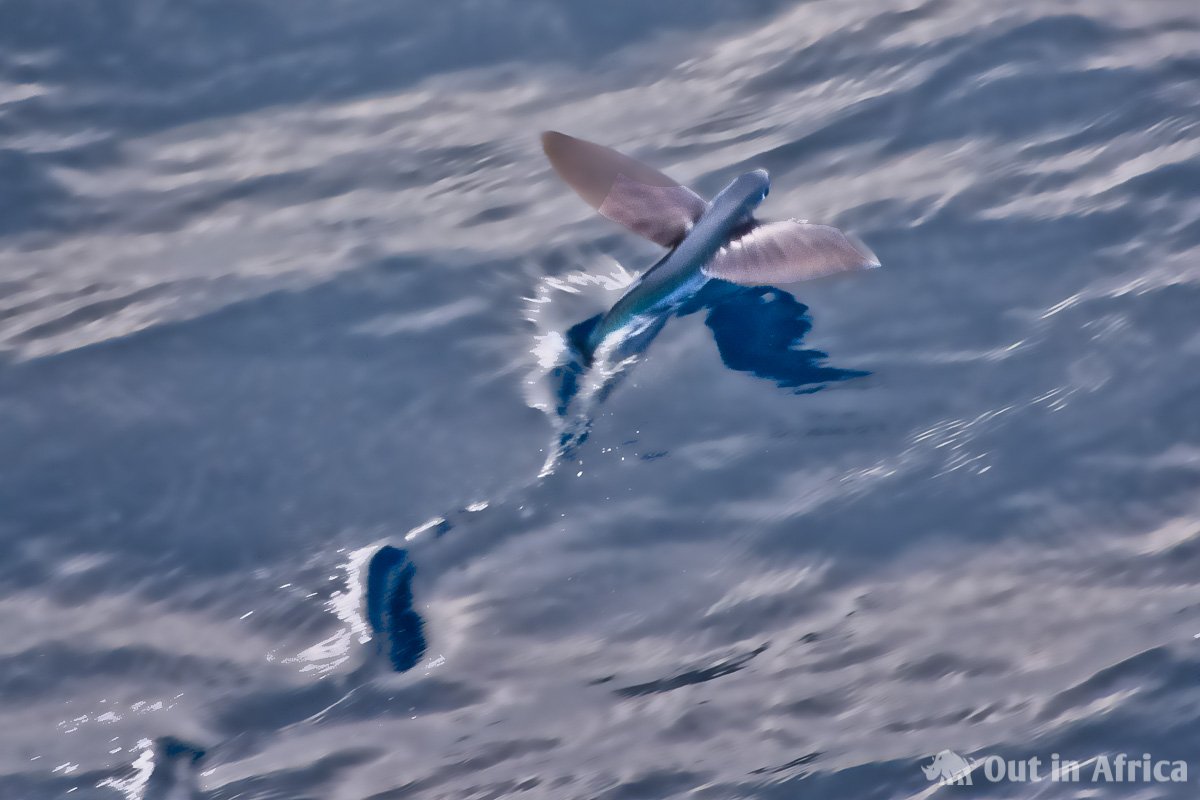
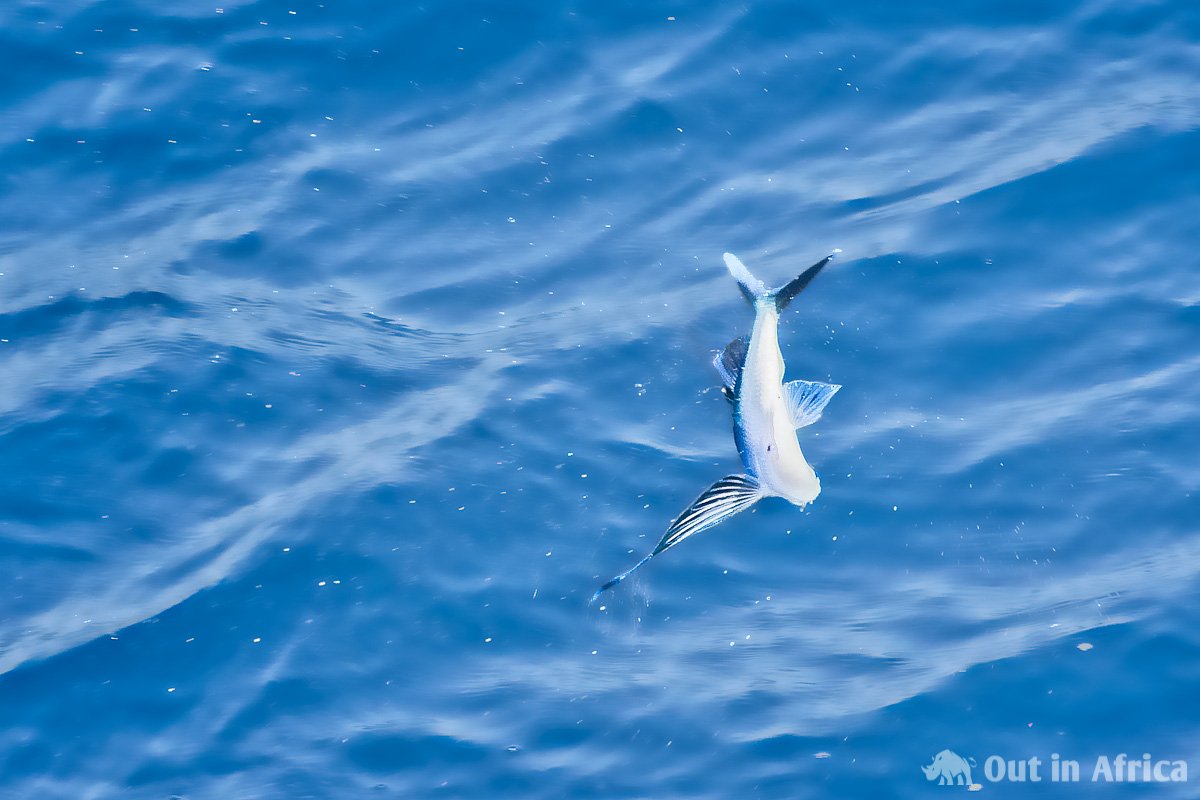
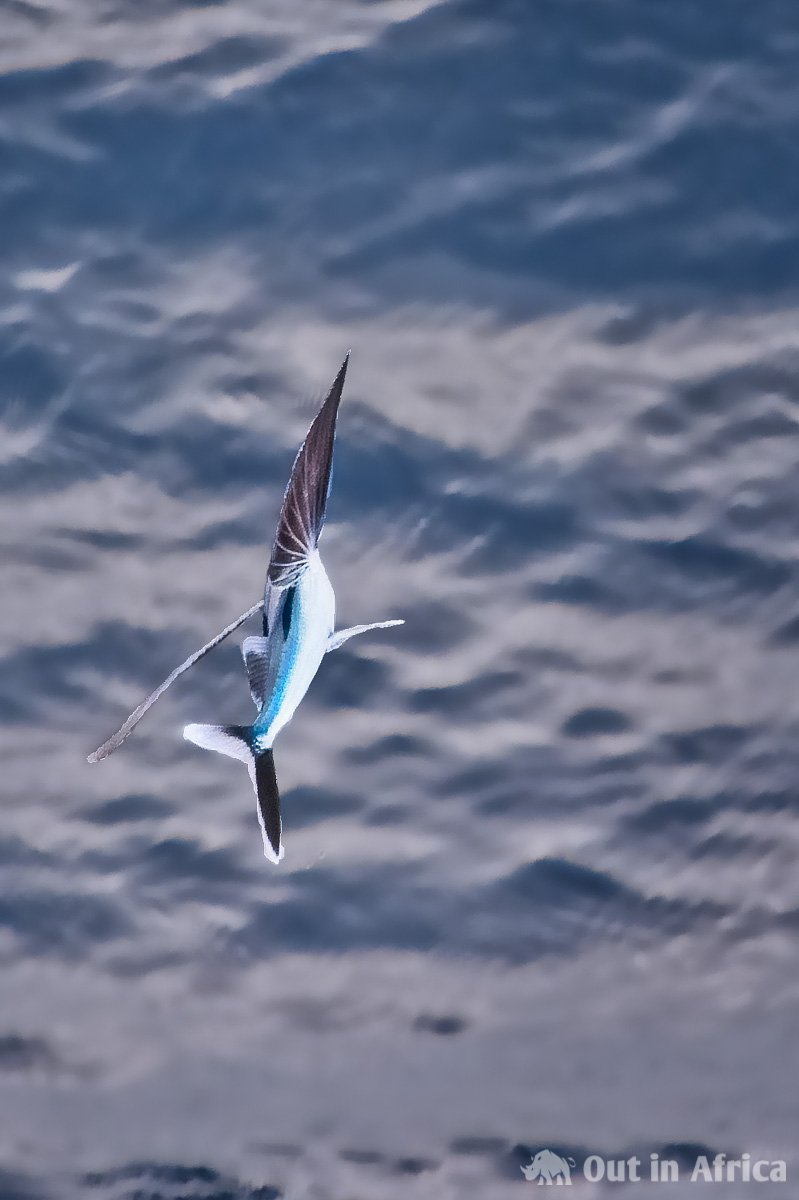
But then the fish wants to swim again, or it stumbles over a wave and falls – more or less elegantly – into the water. Immediately he puts his wings, which are now fins again, on his body and dives down.
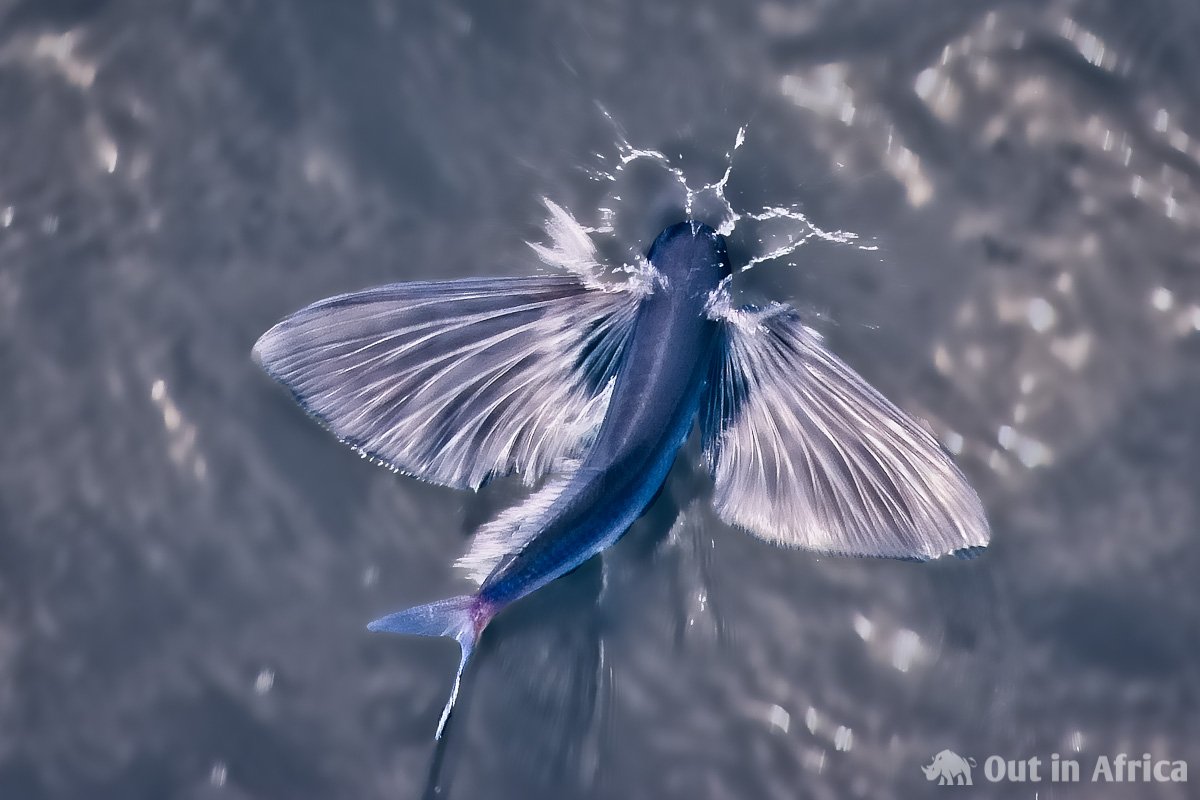
Would you like to see an overview of all articles about my journey on the cargo ship Bright Sky? Click here for a table of contents.

Grate Coverage…